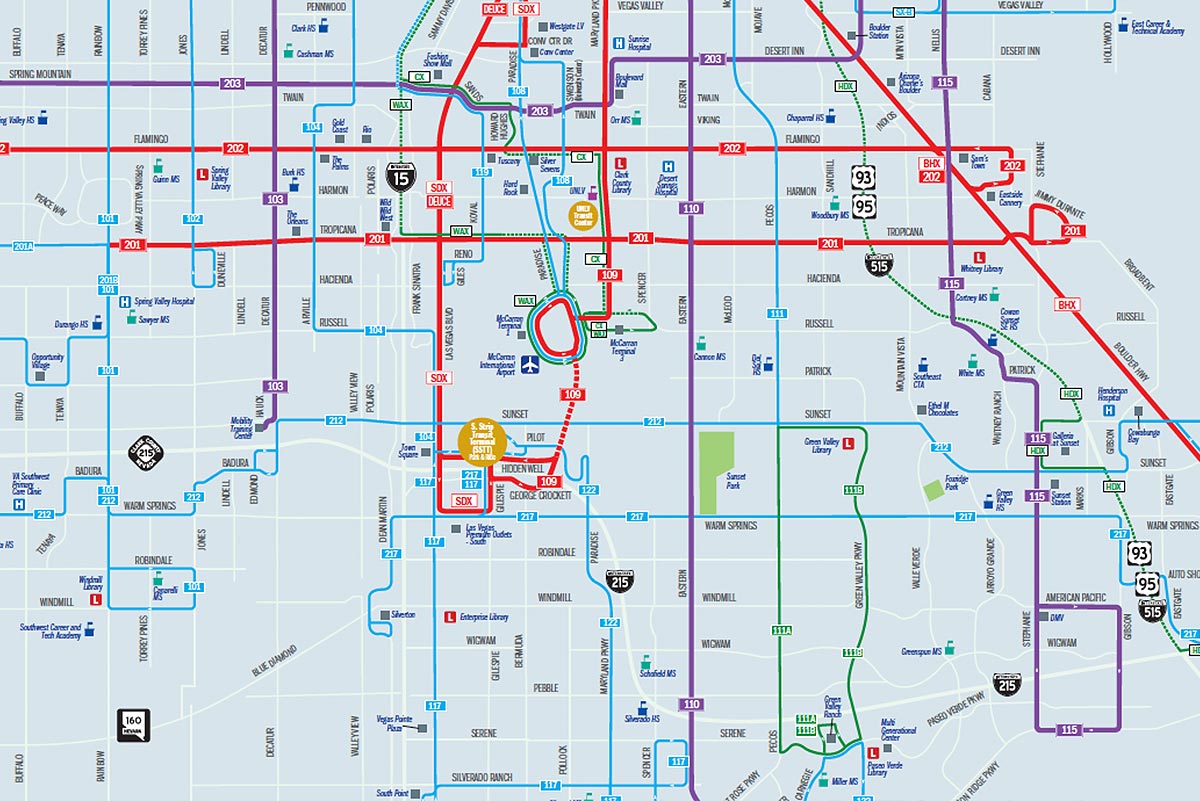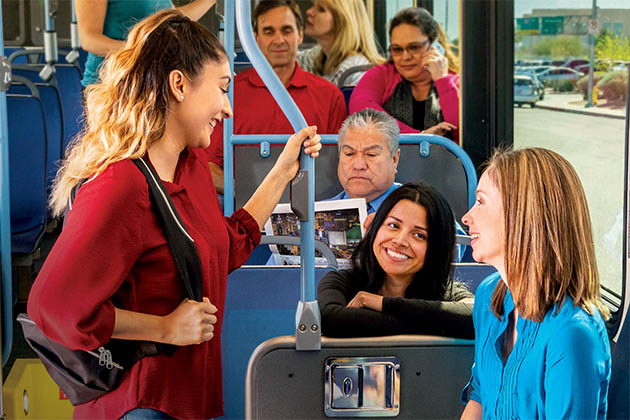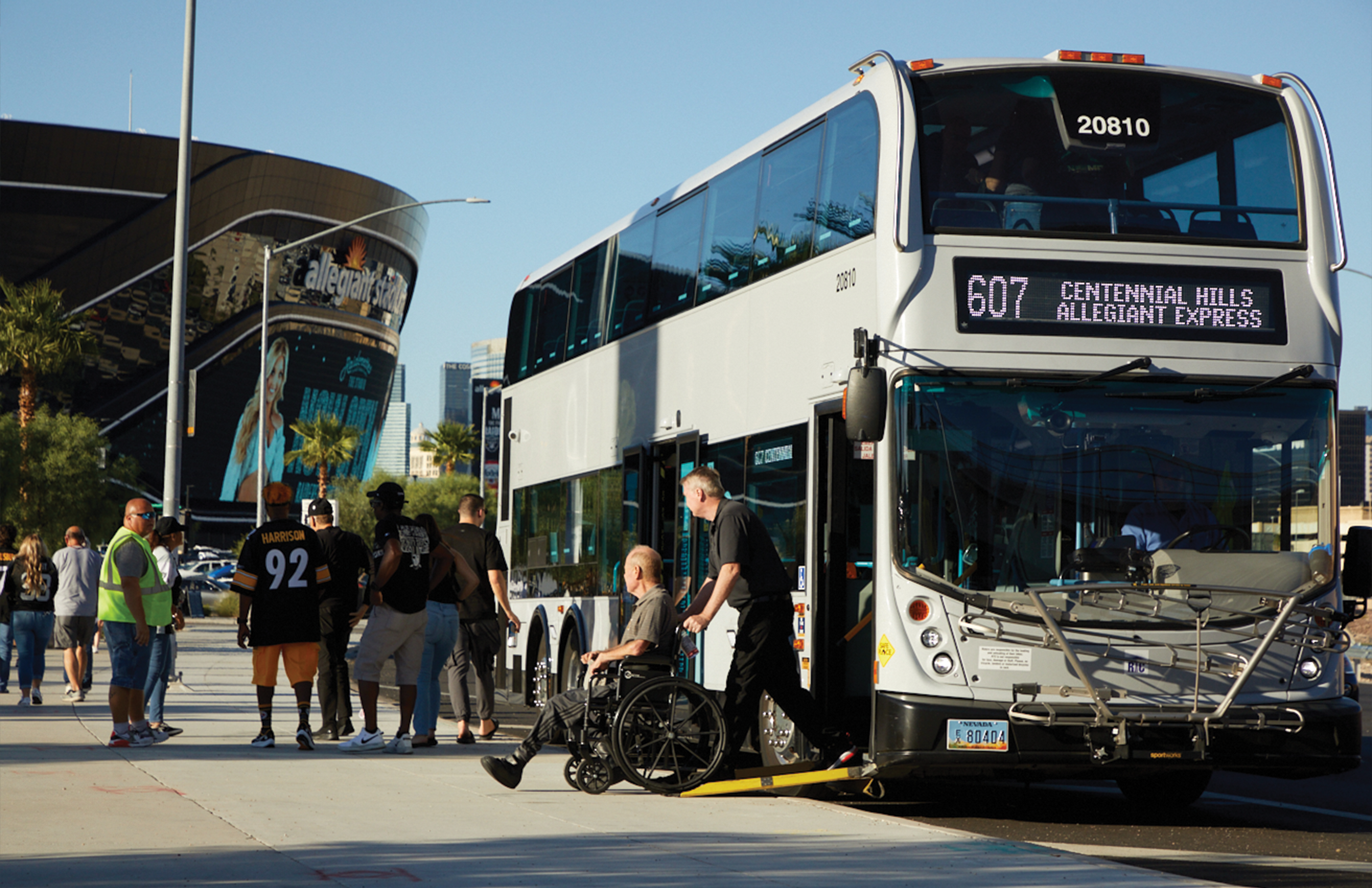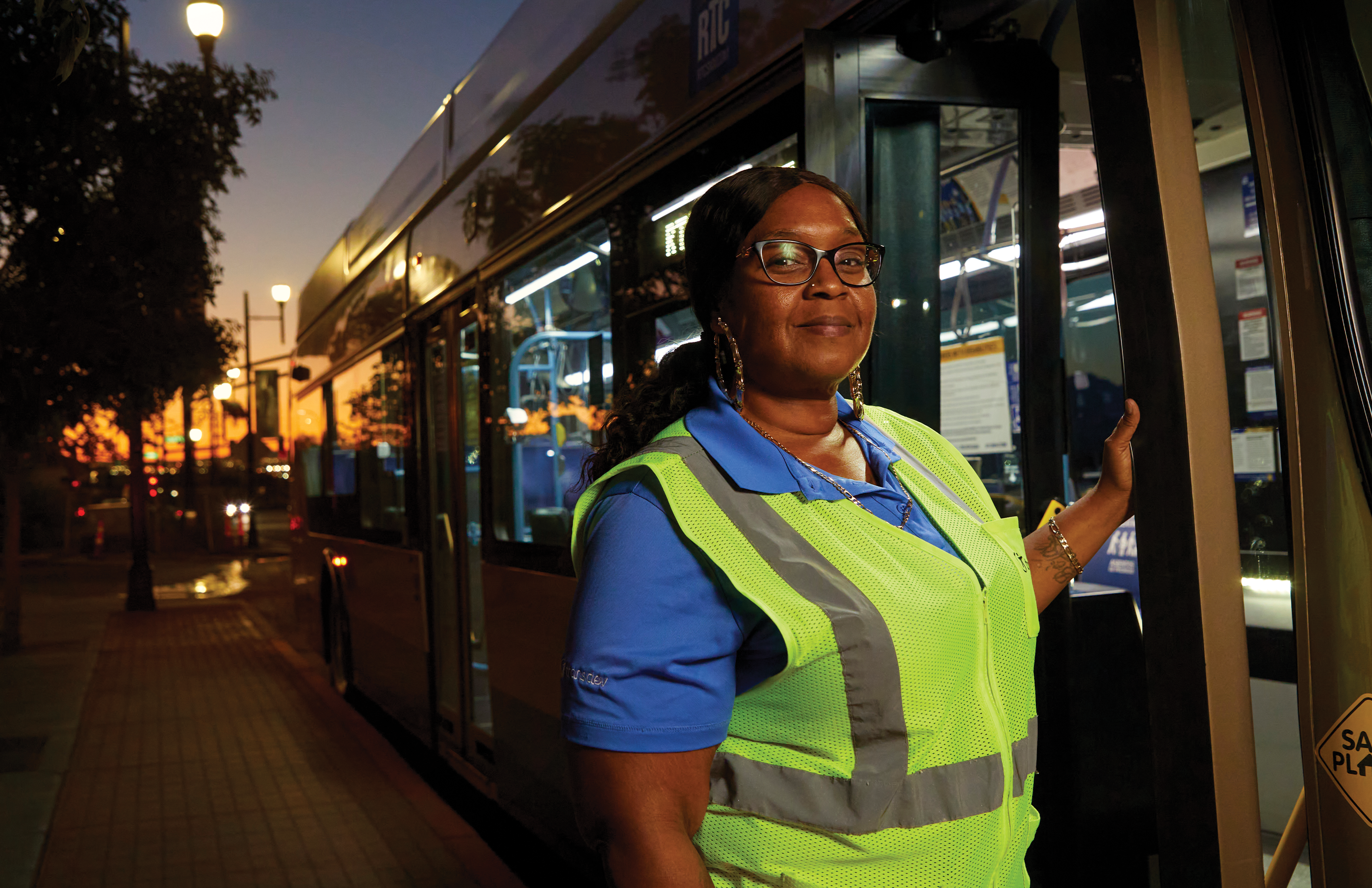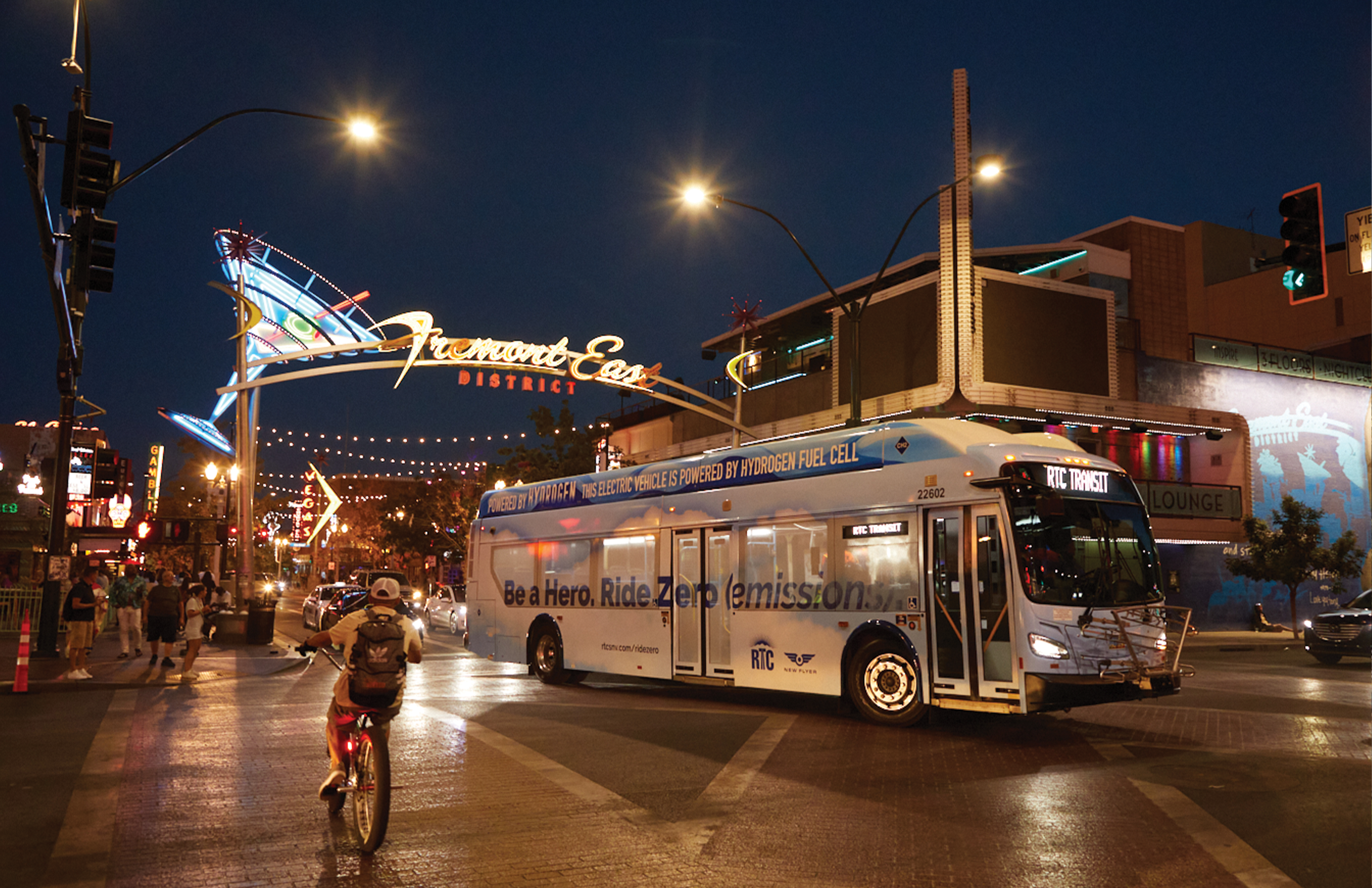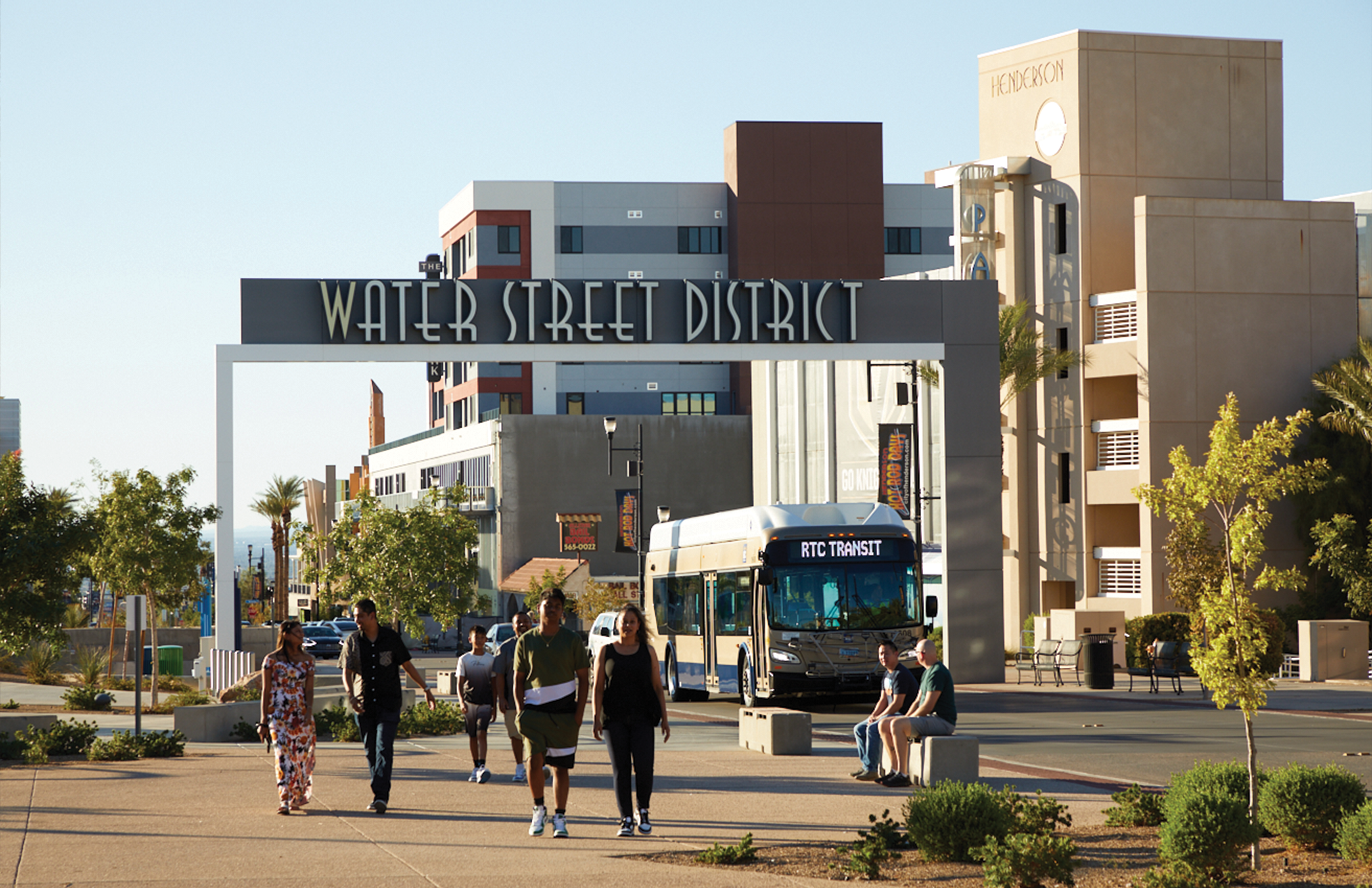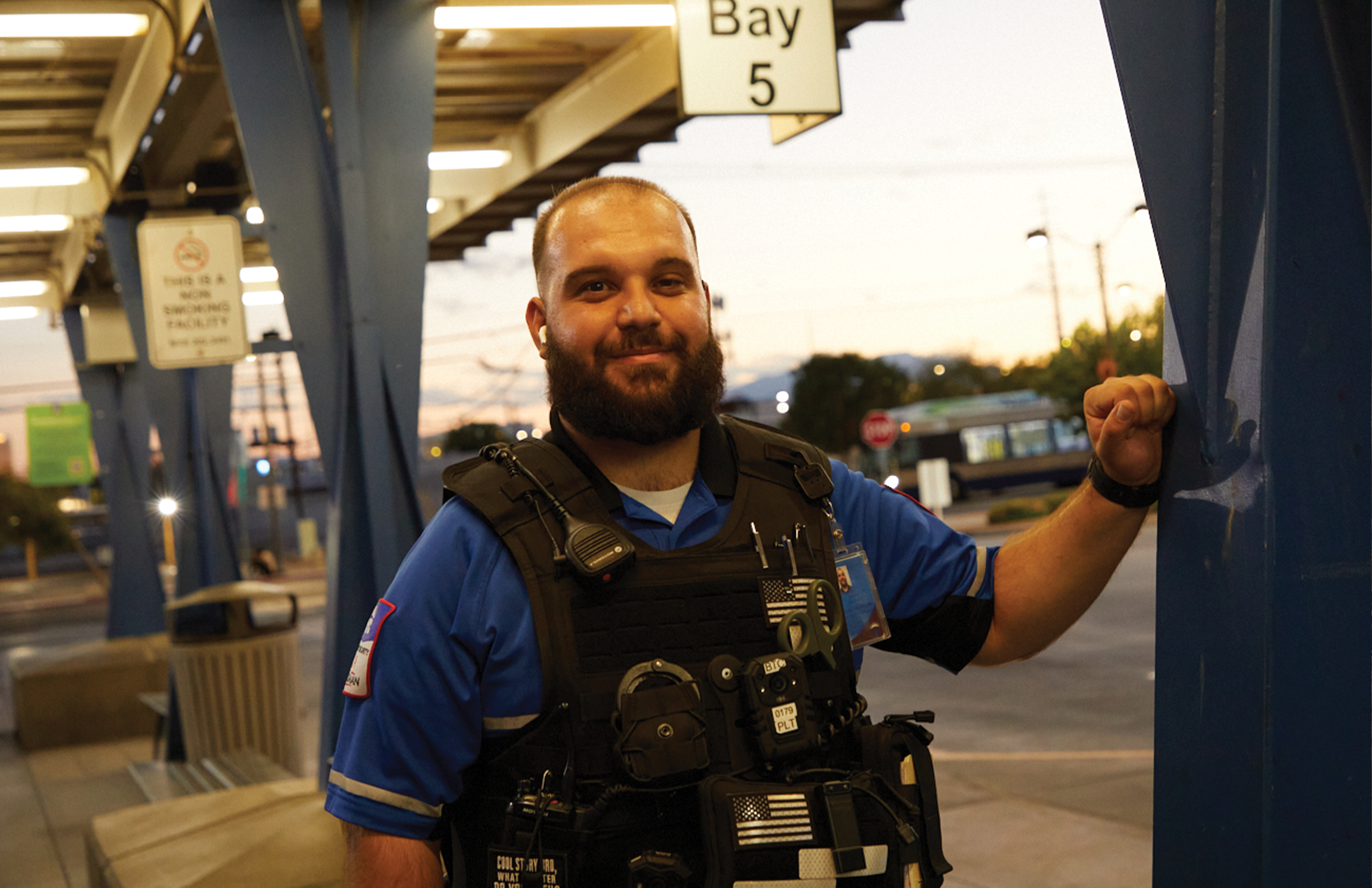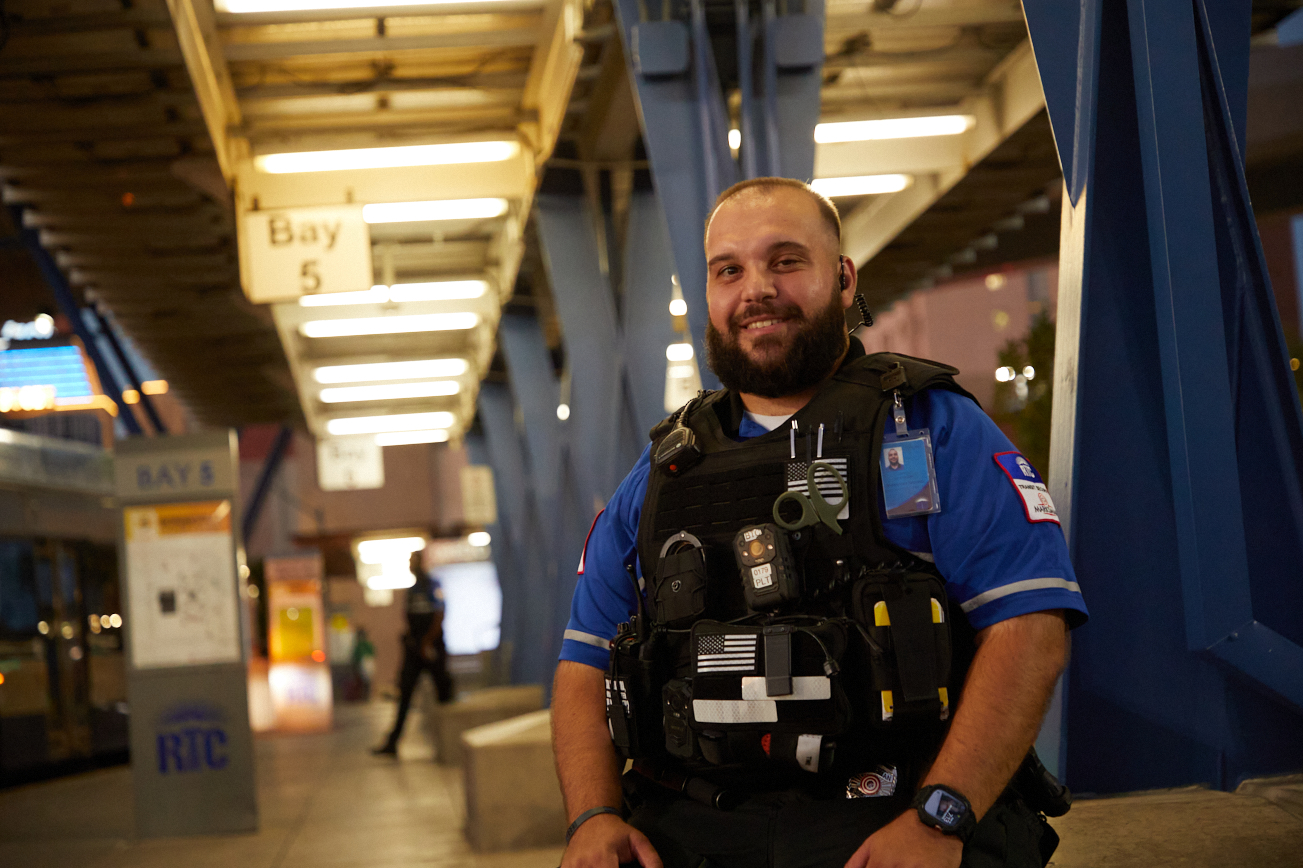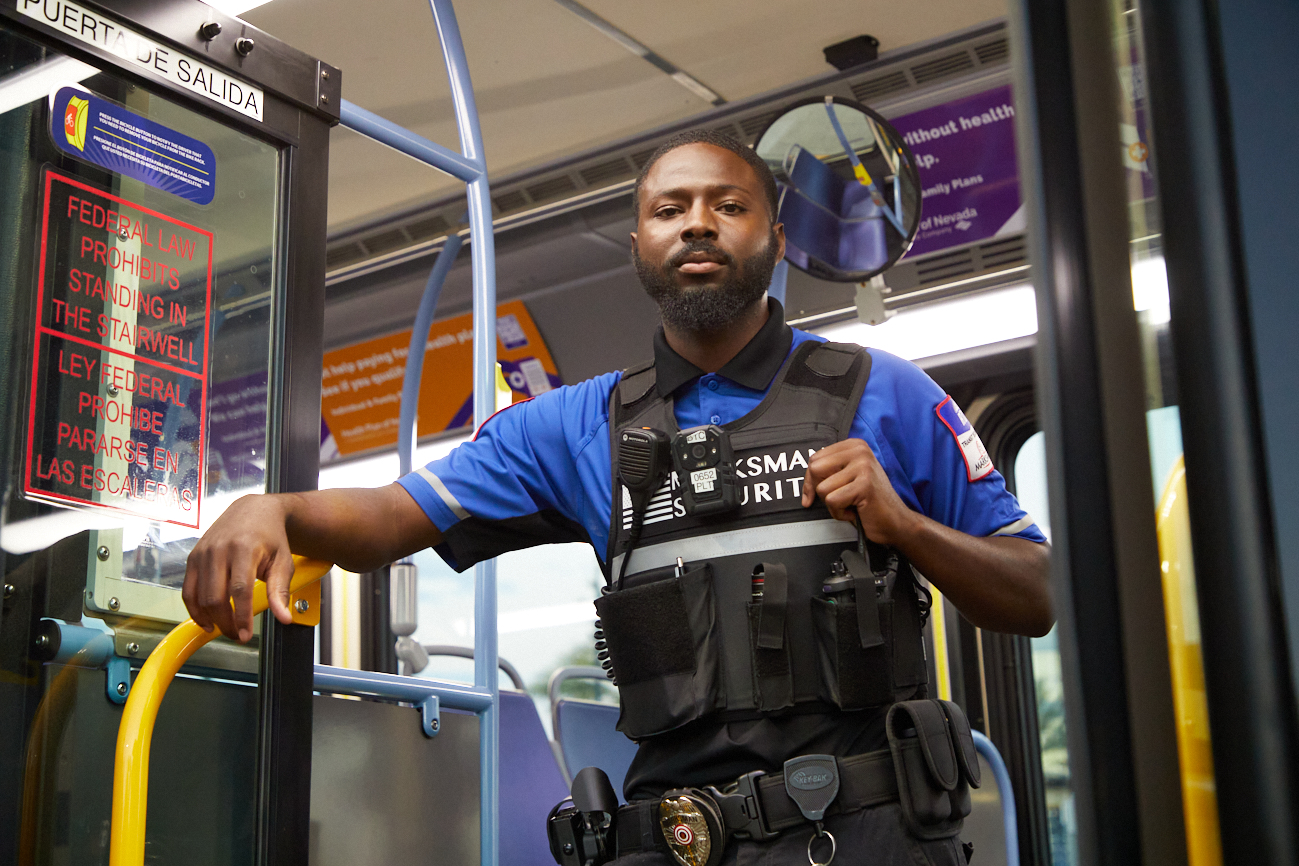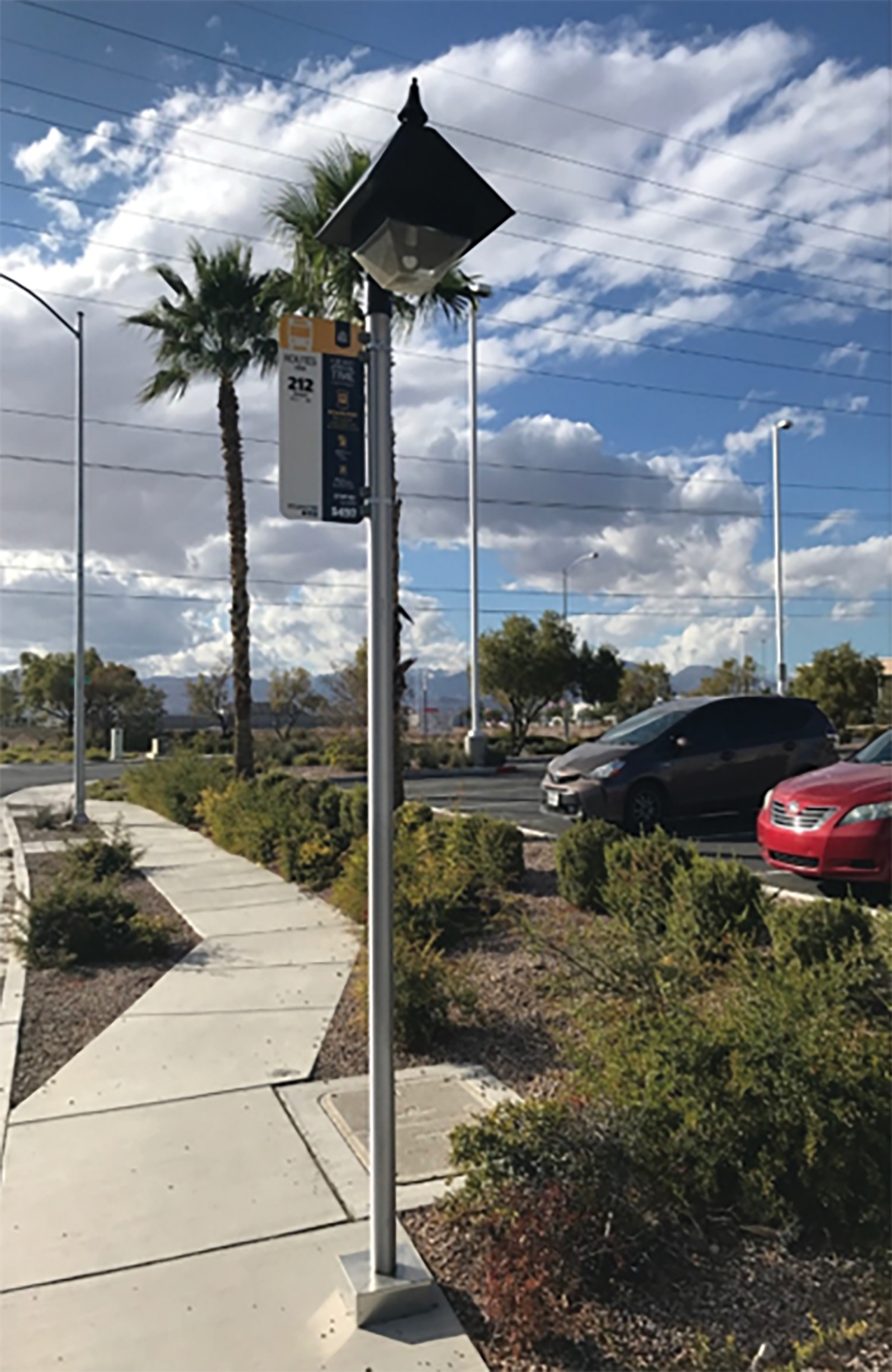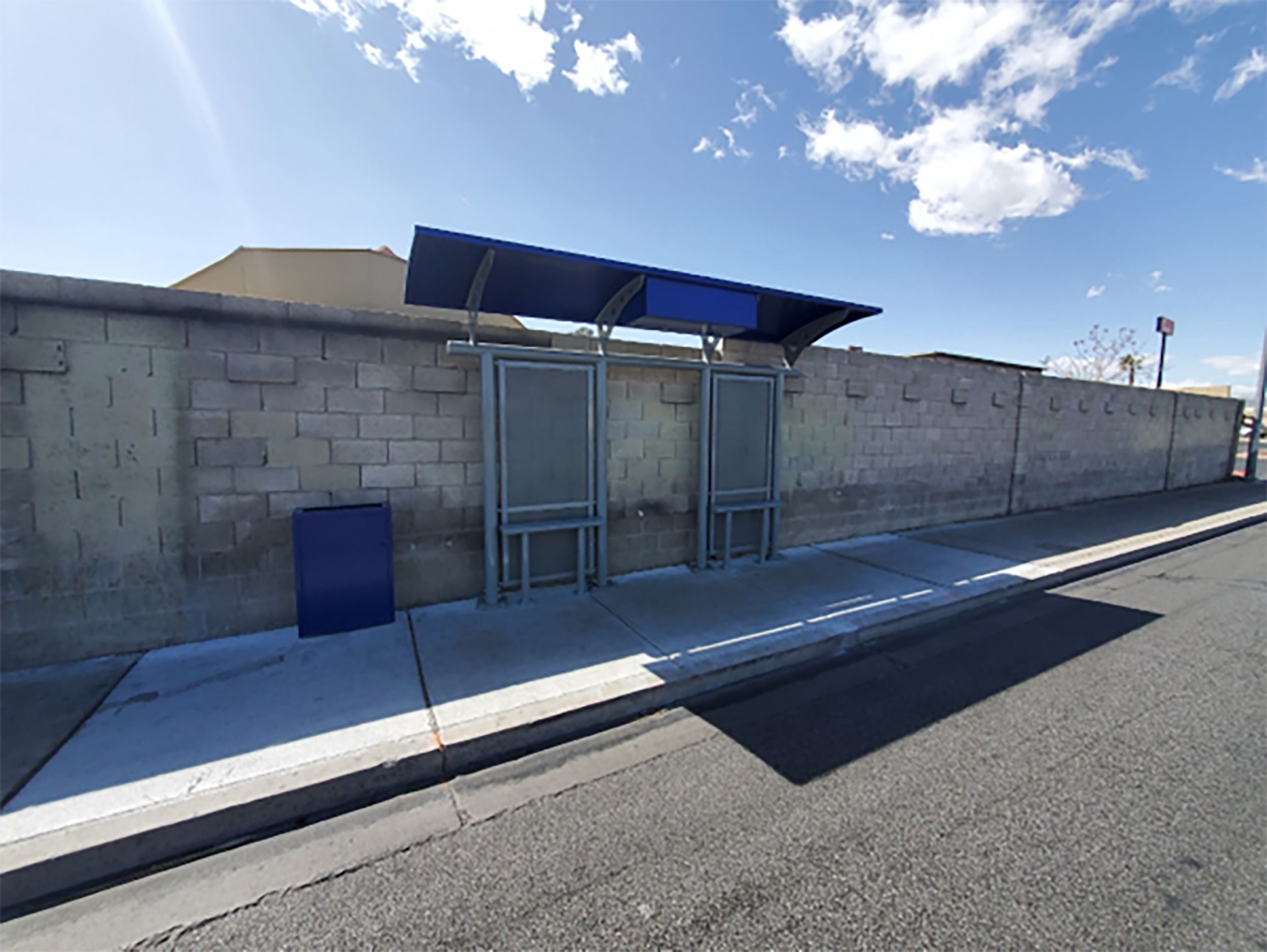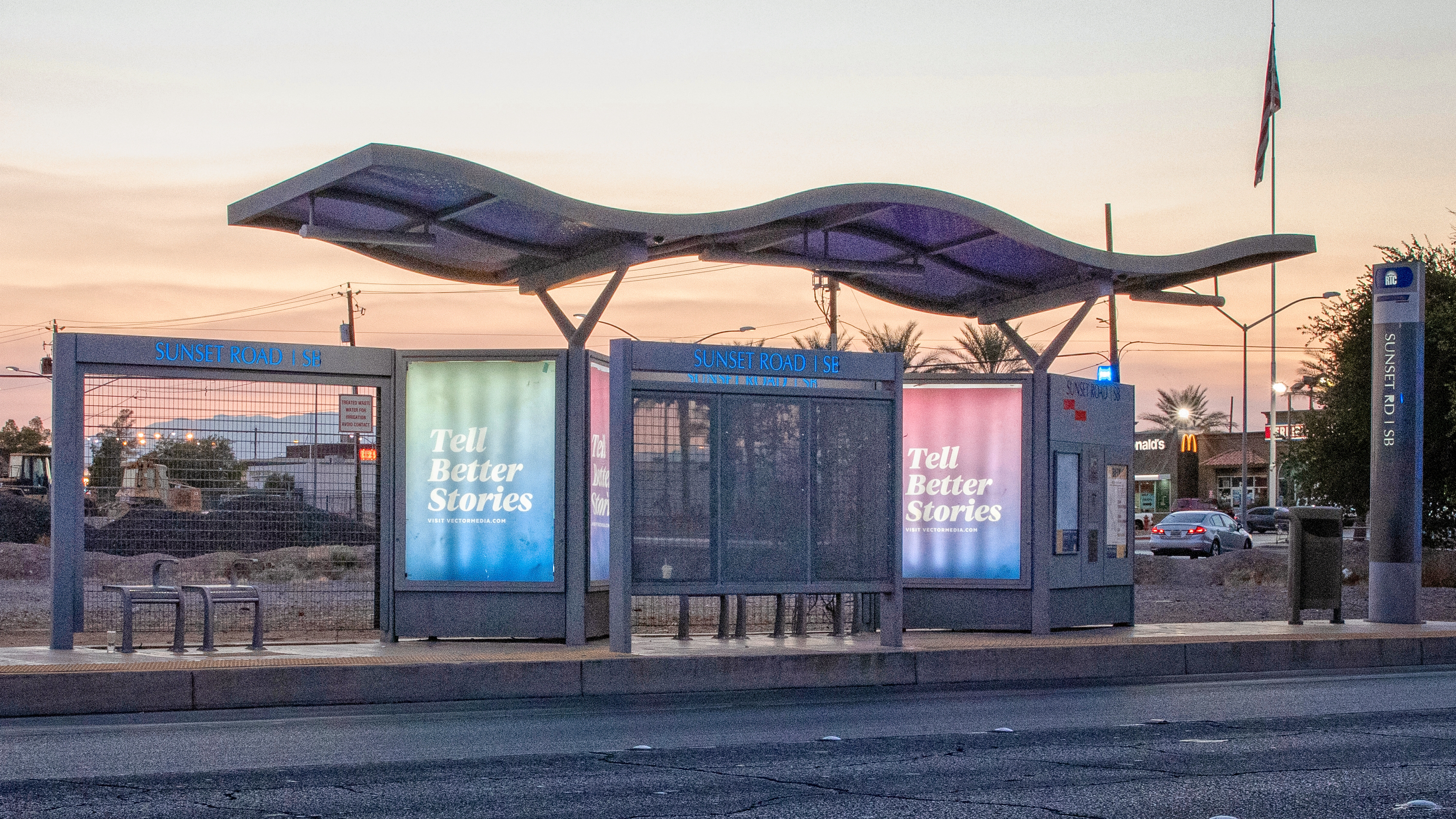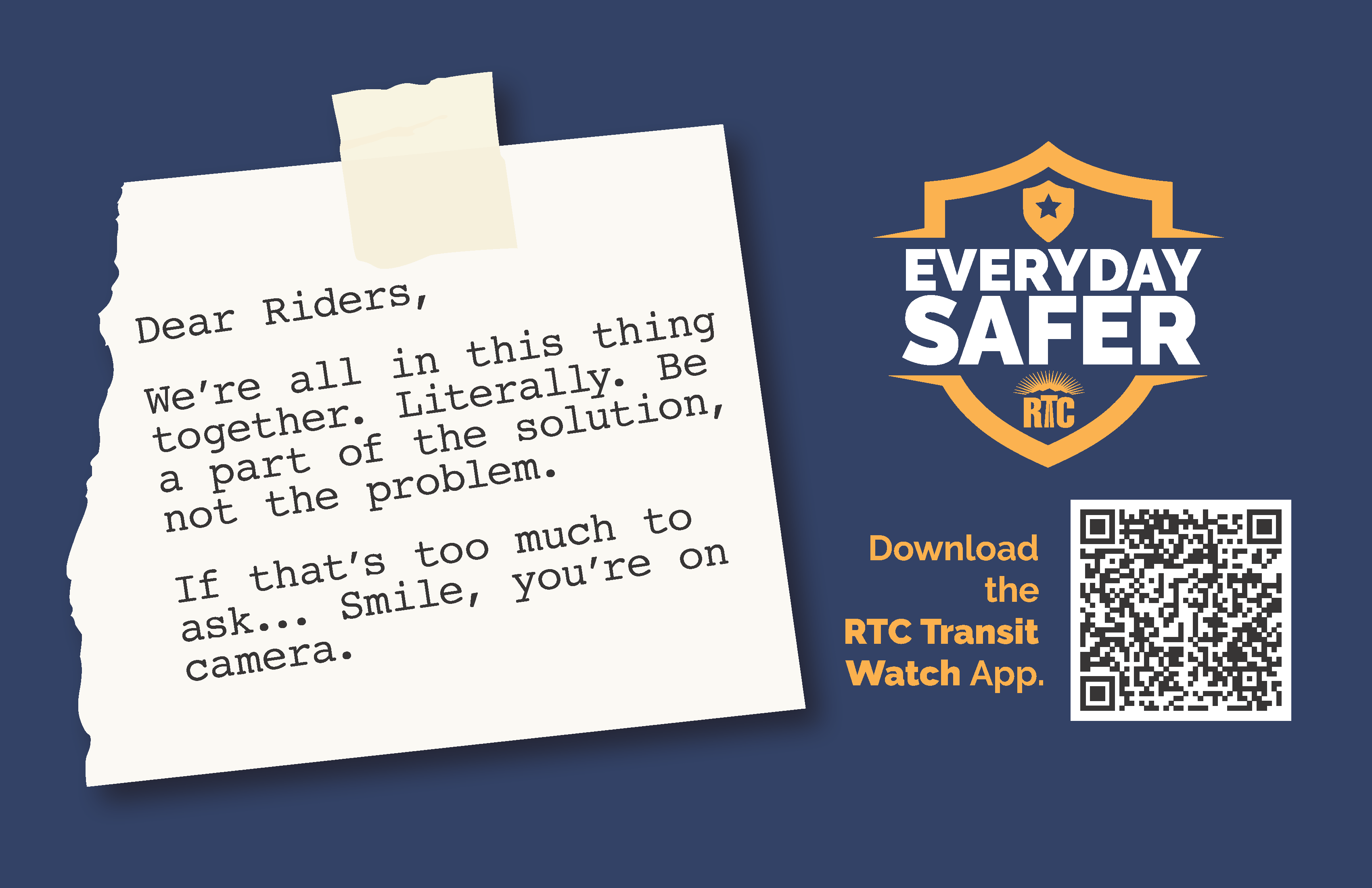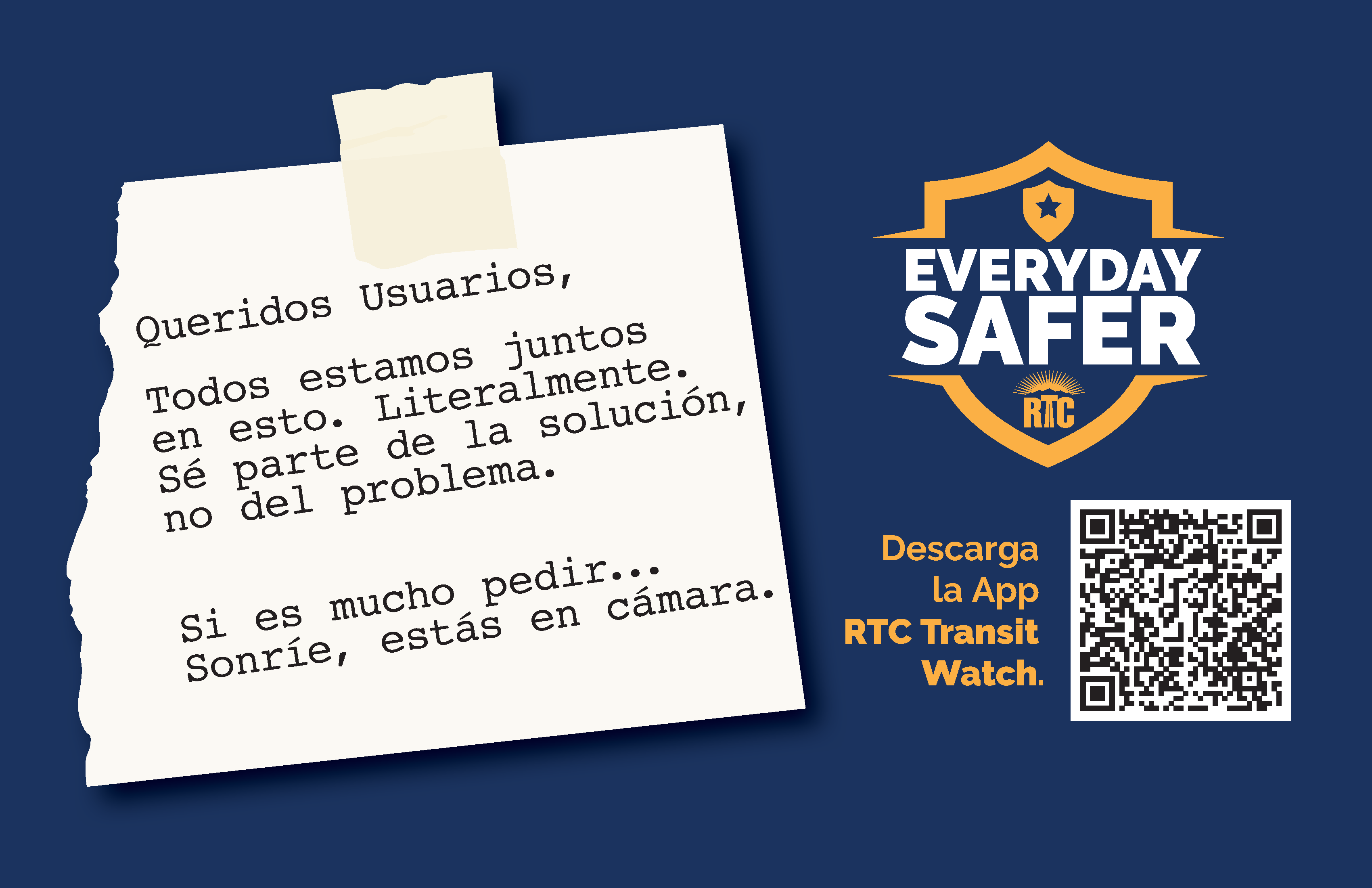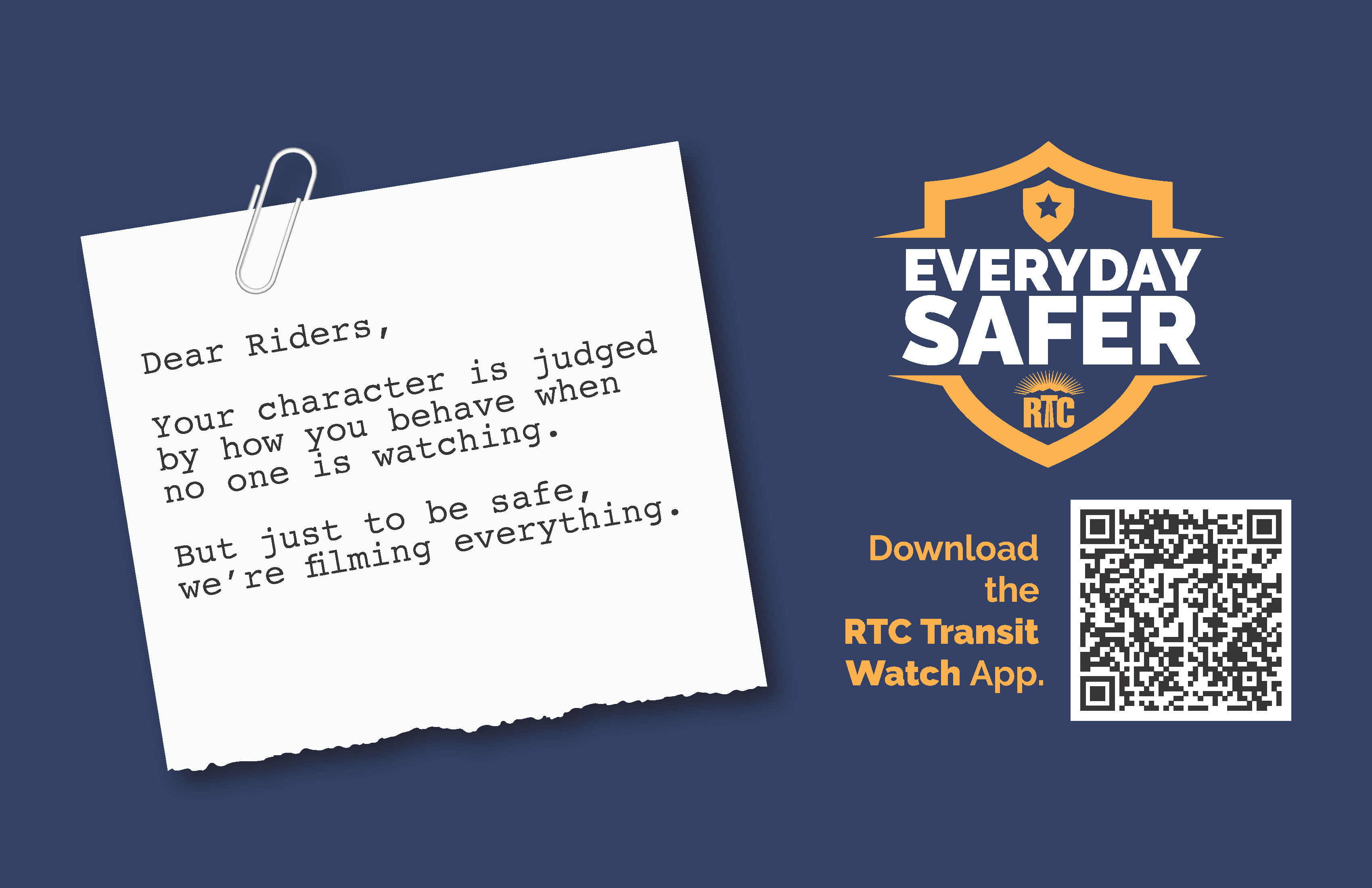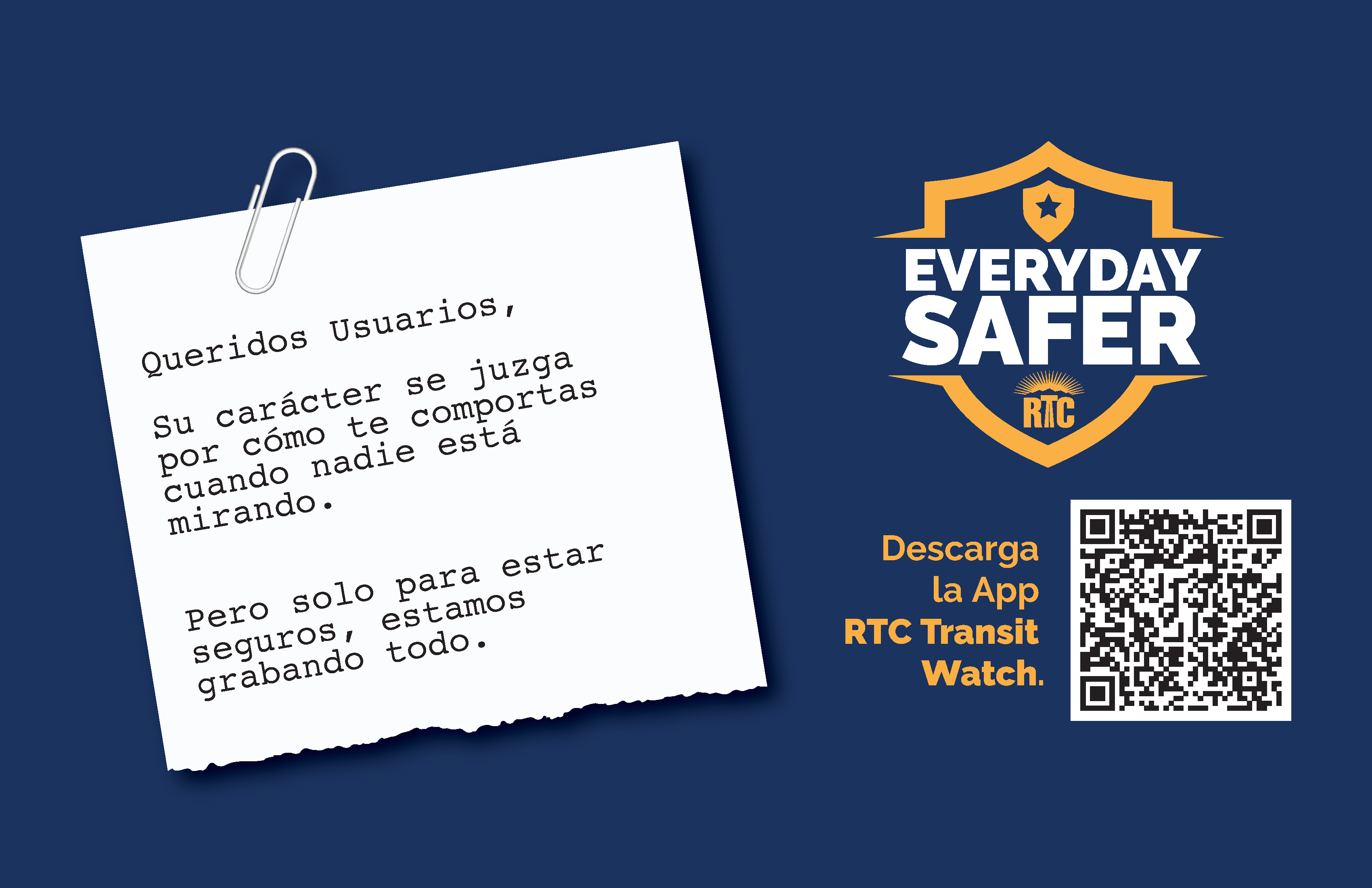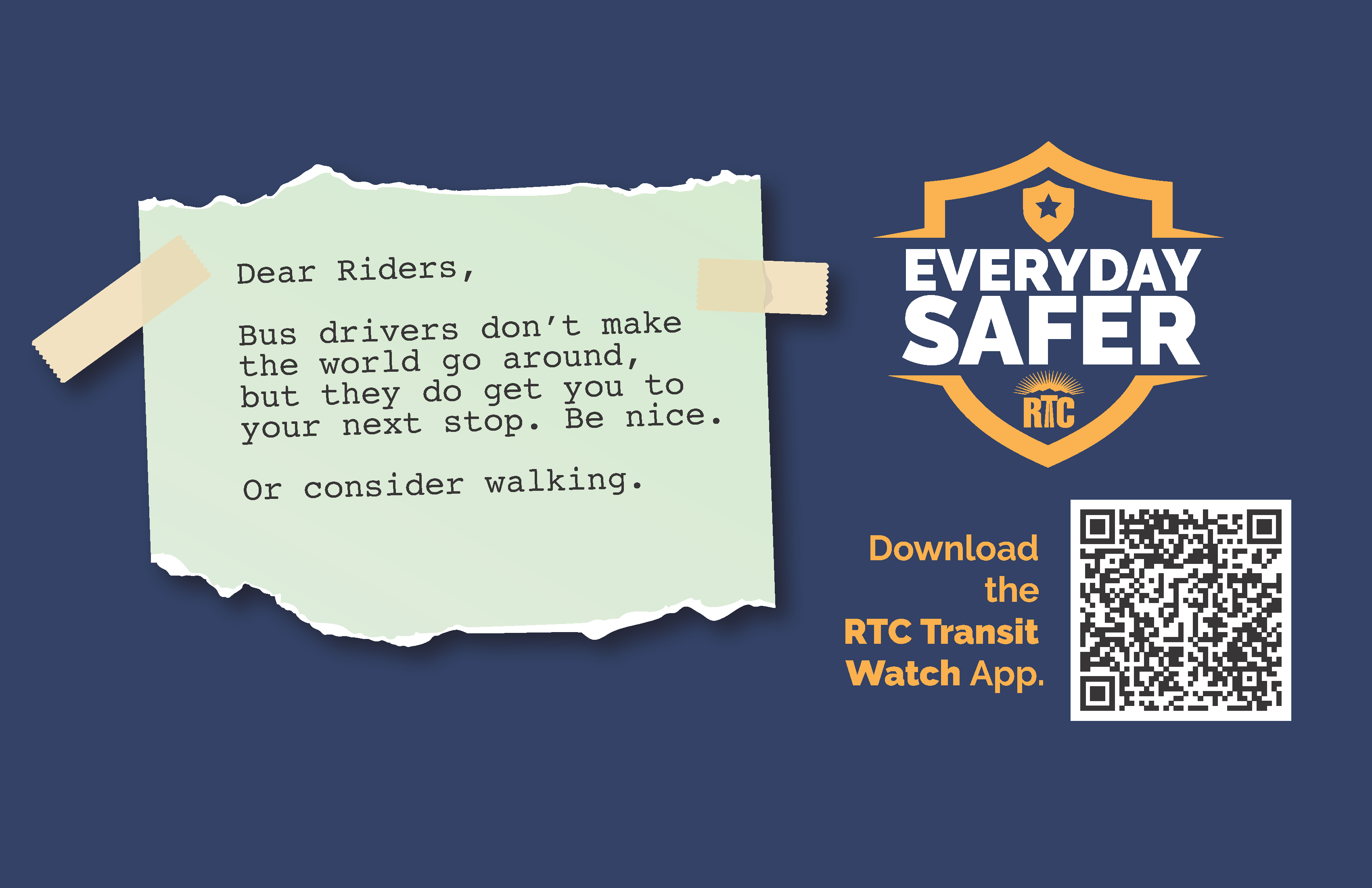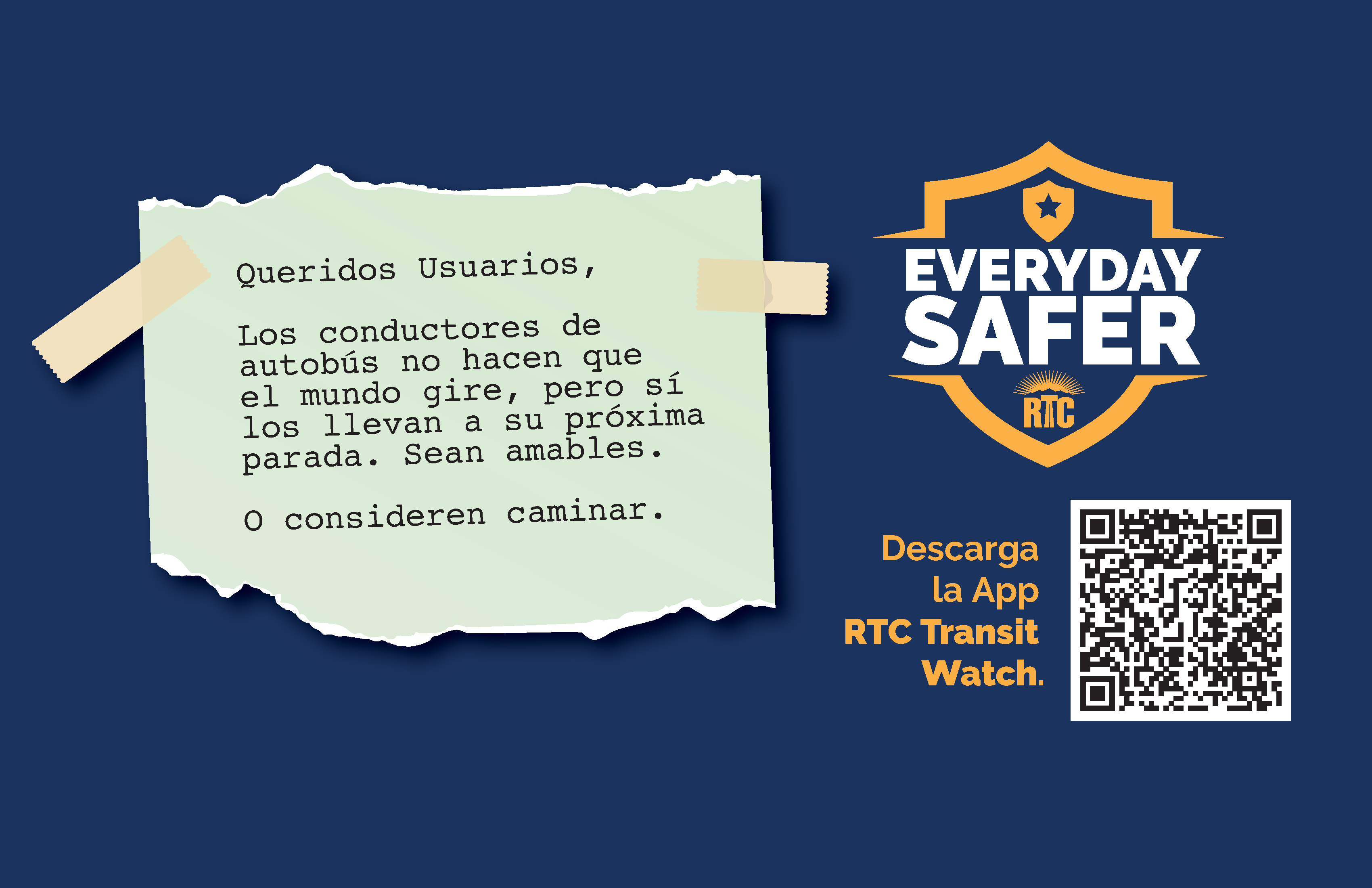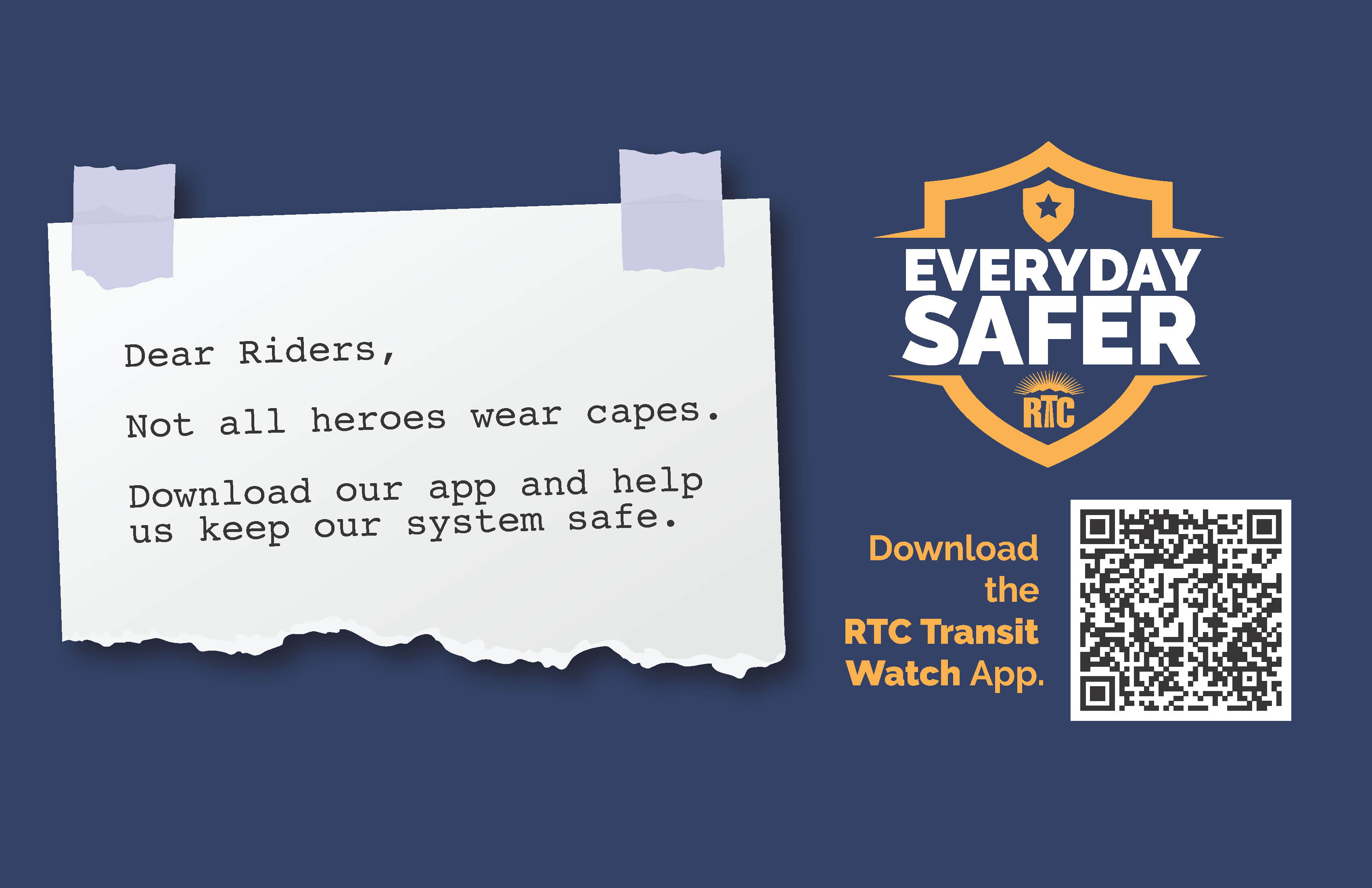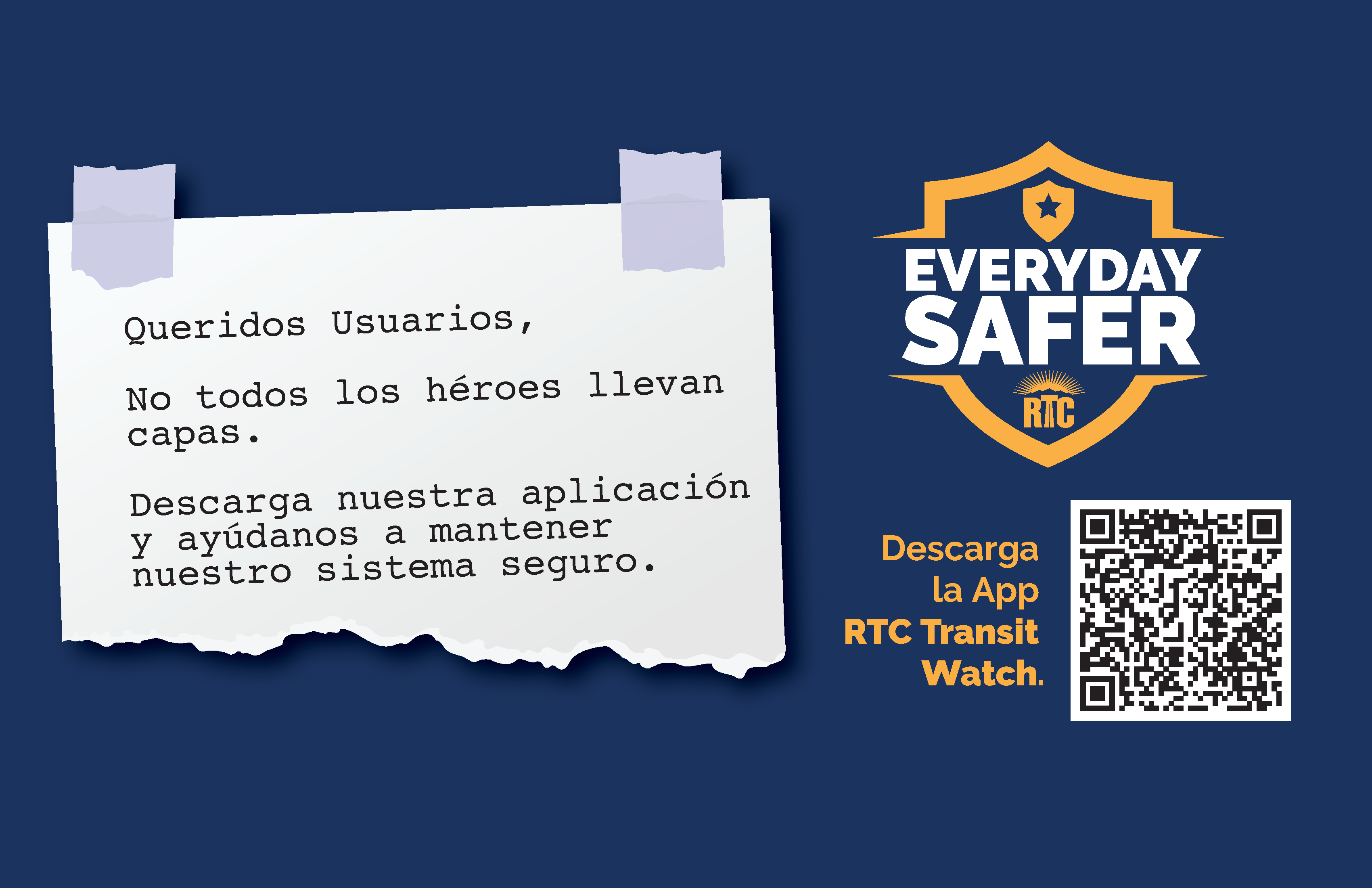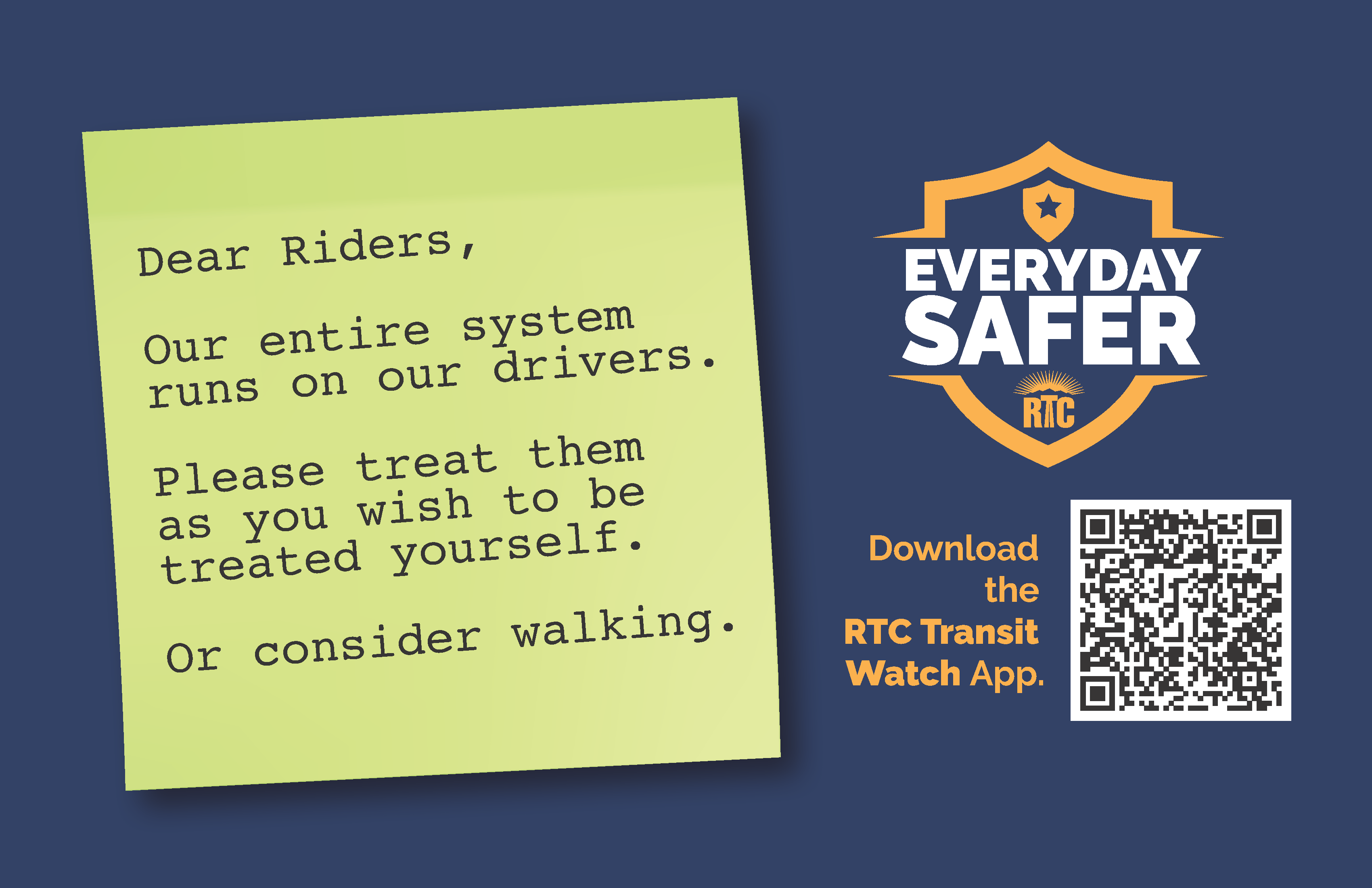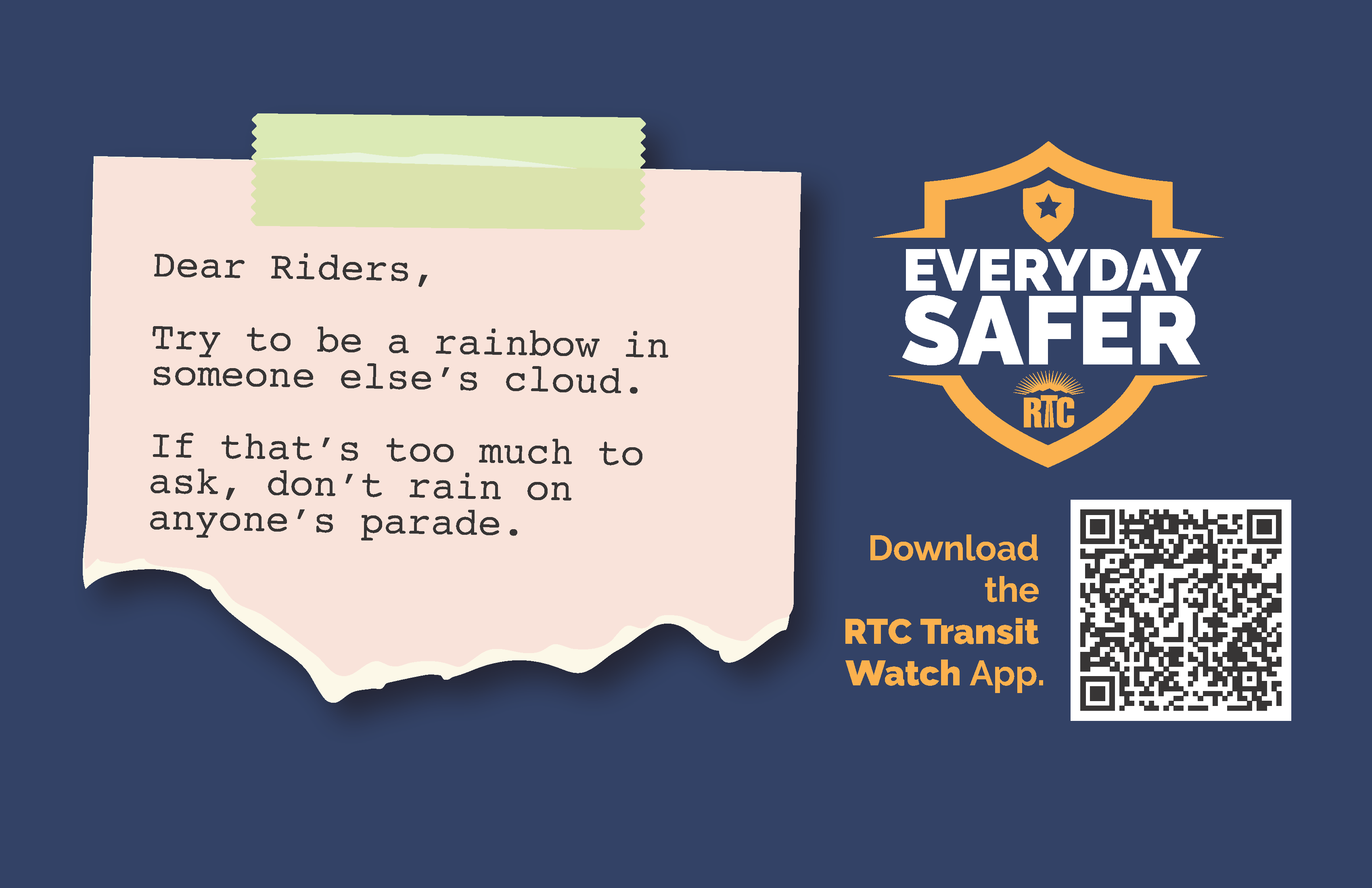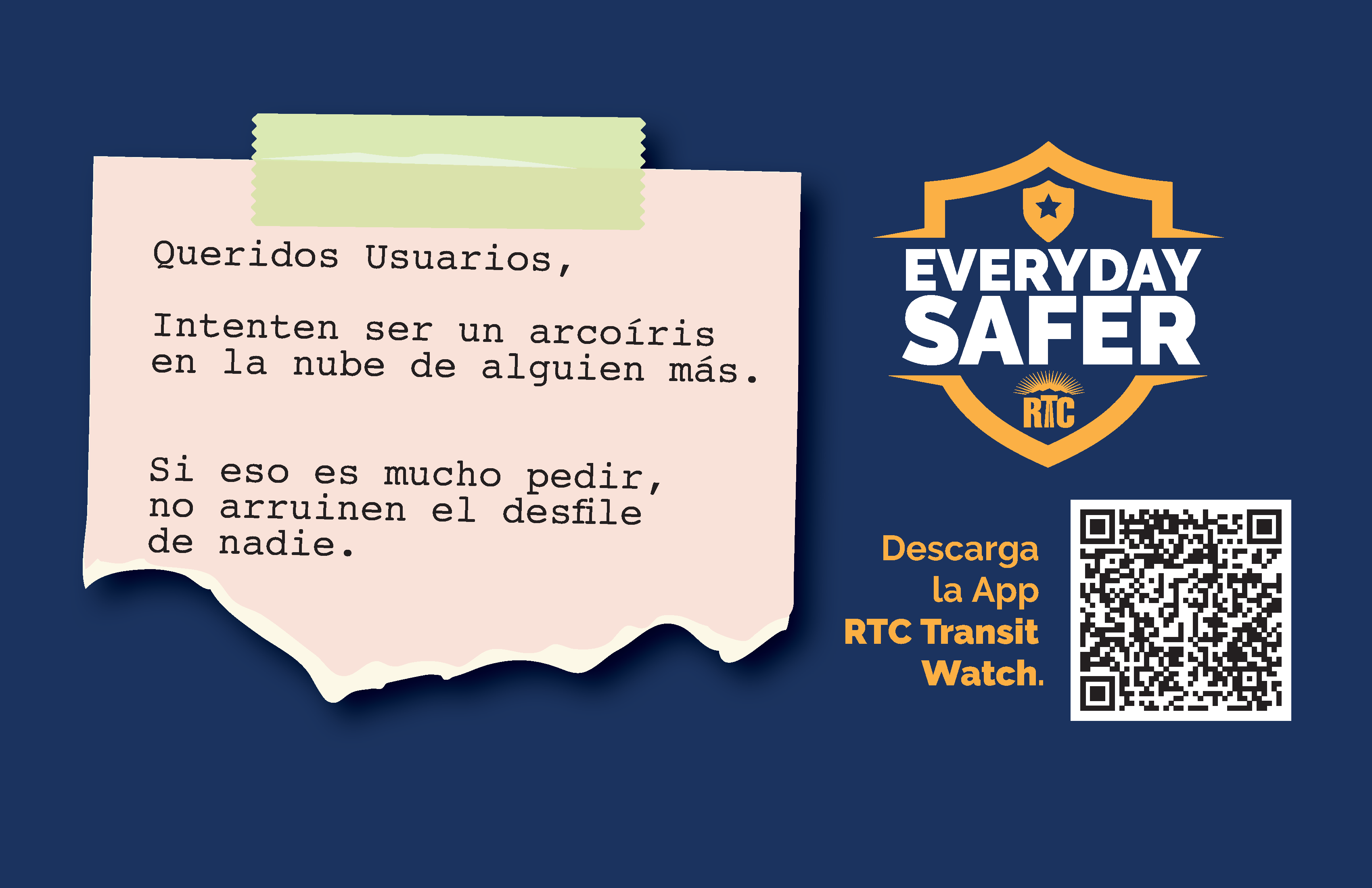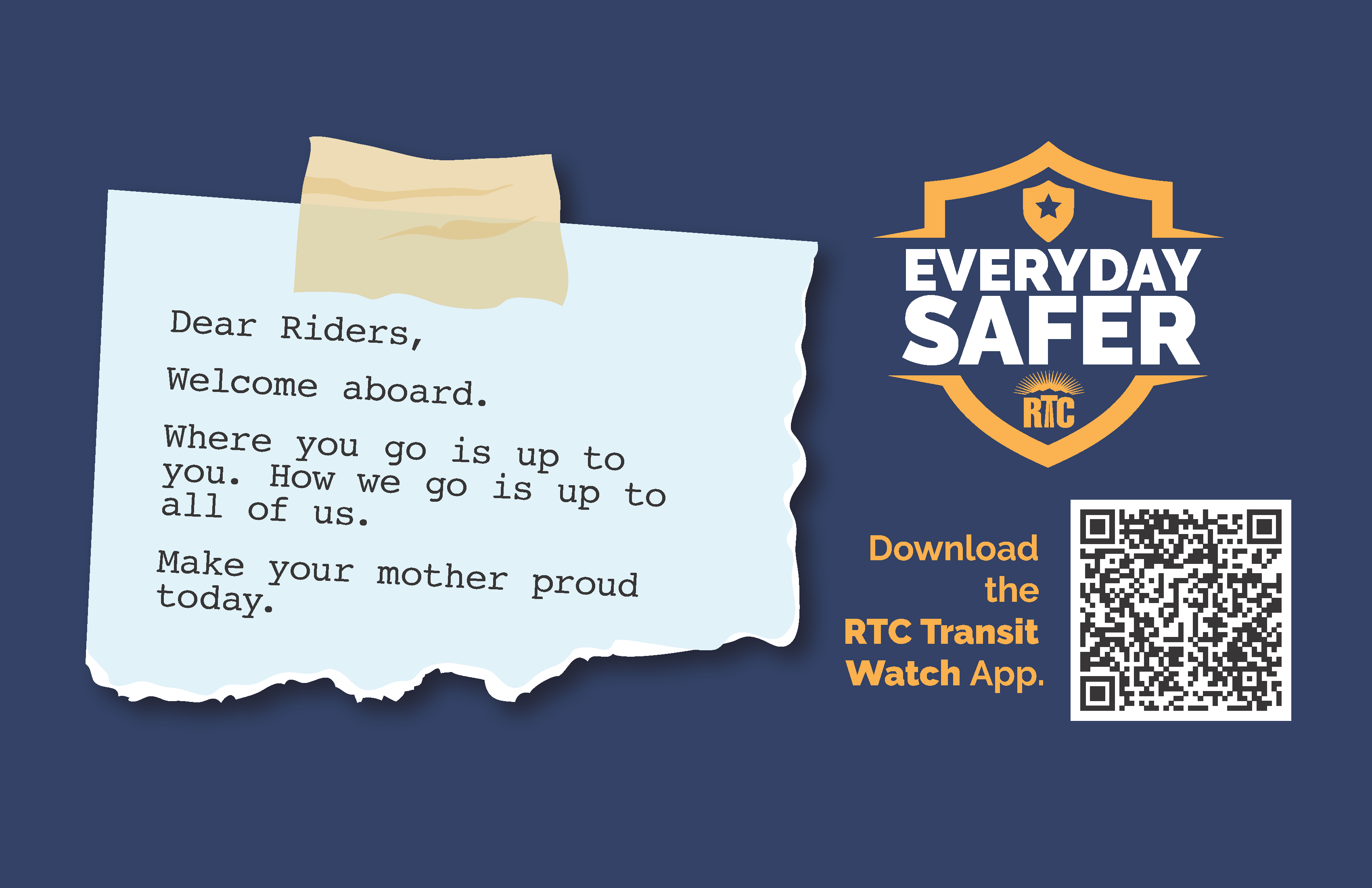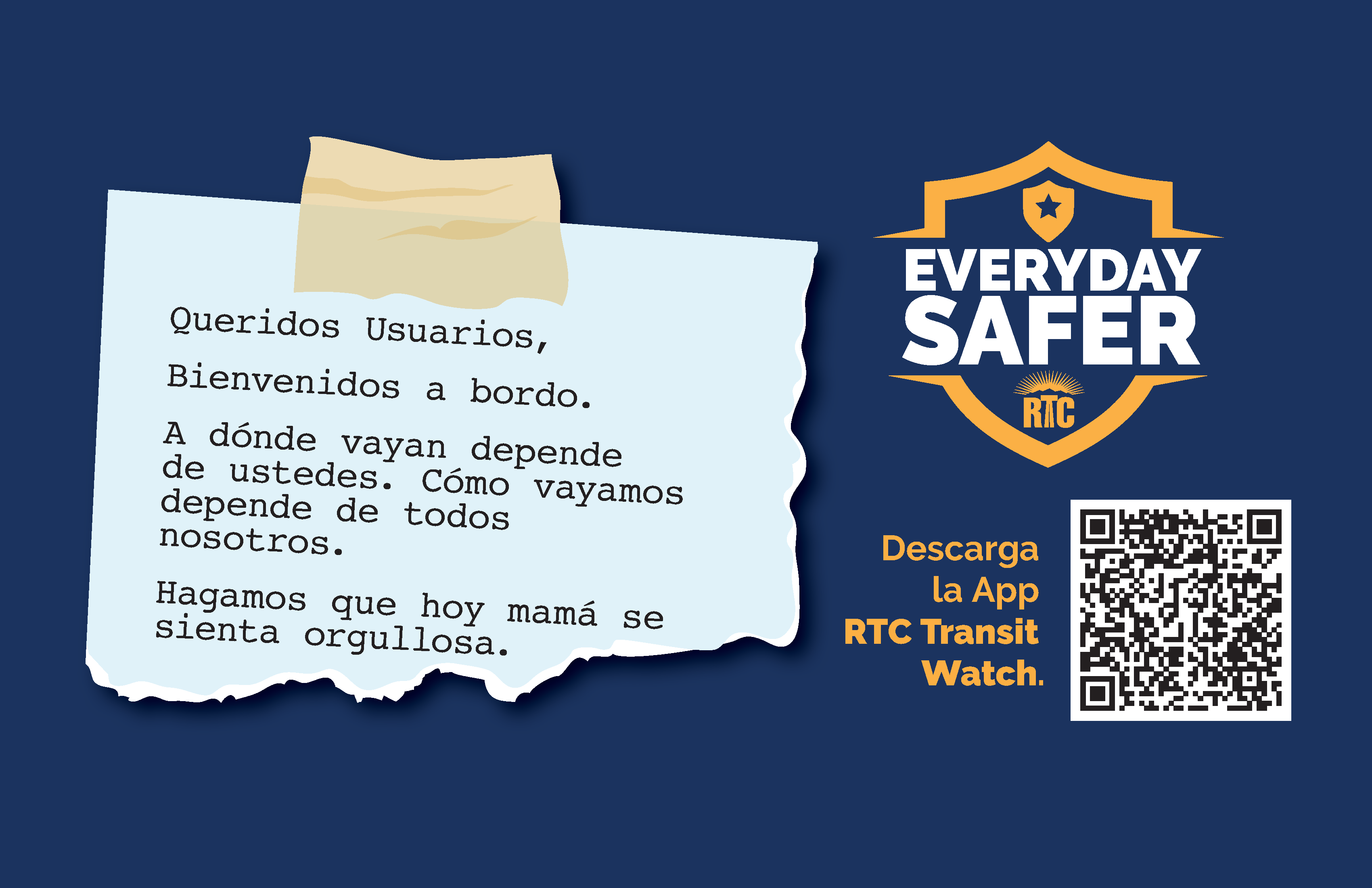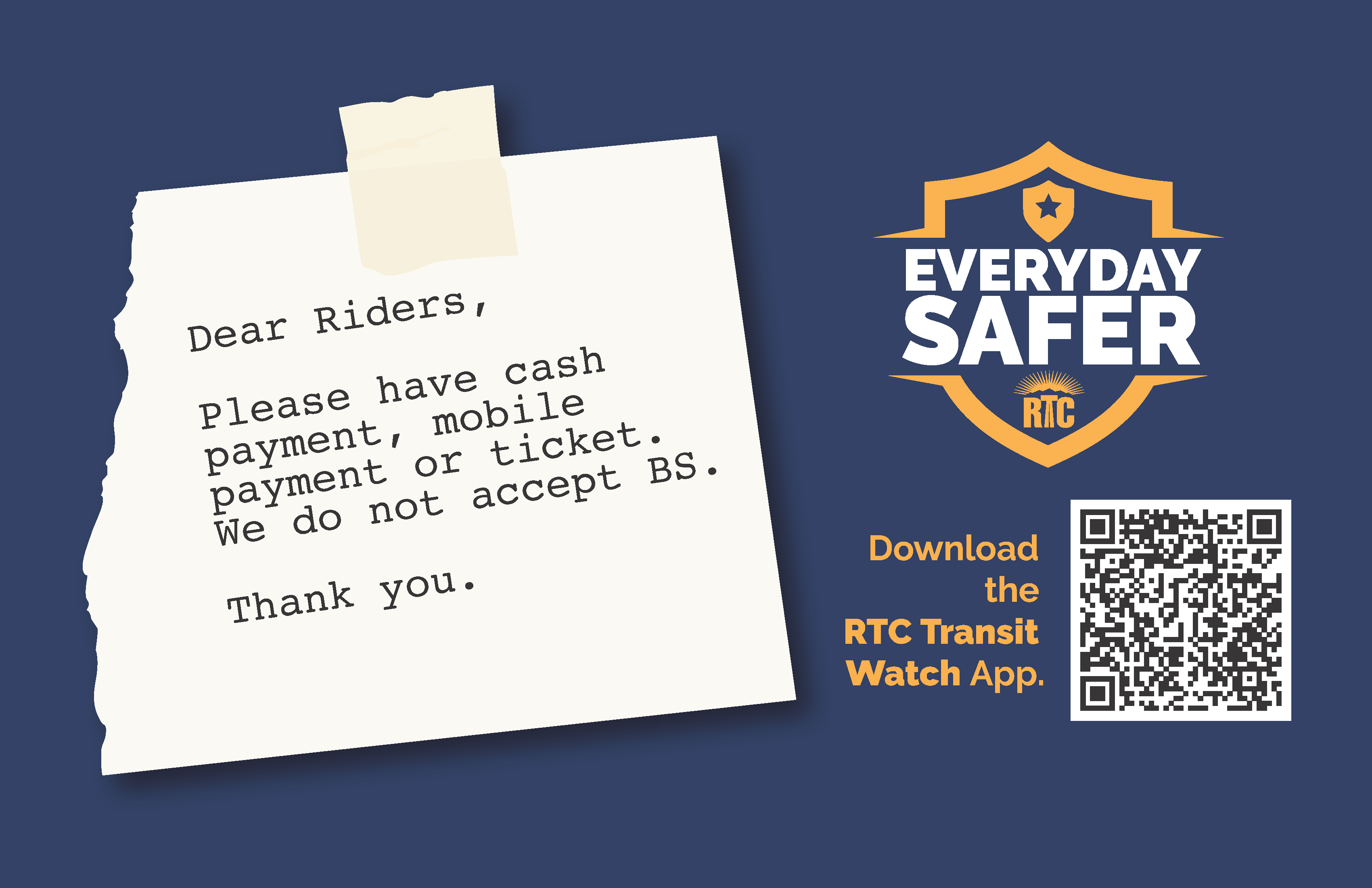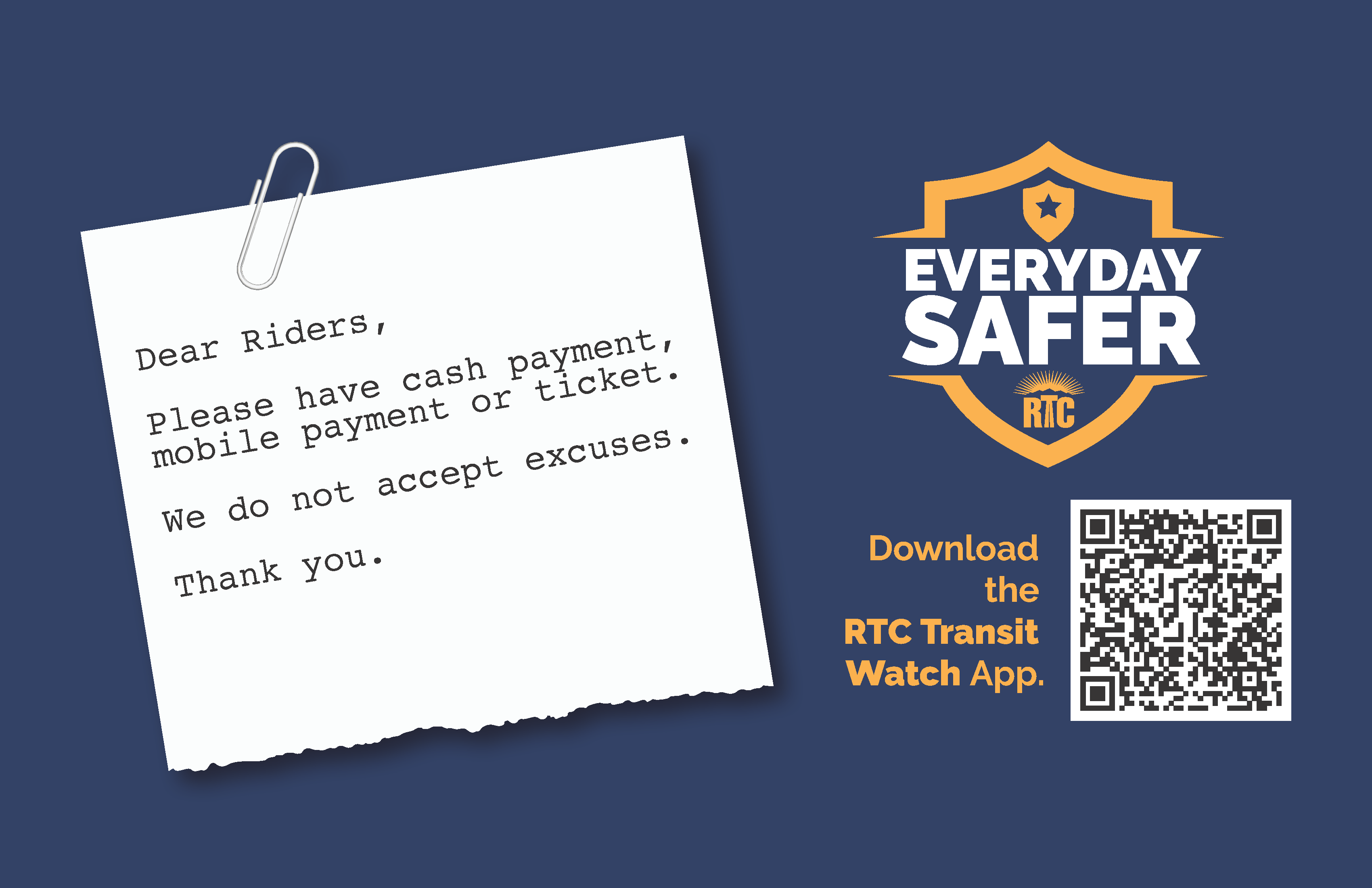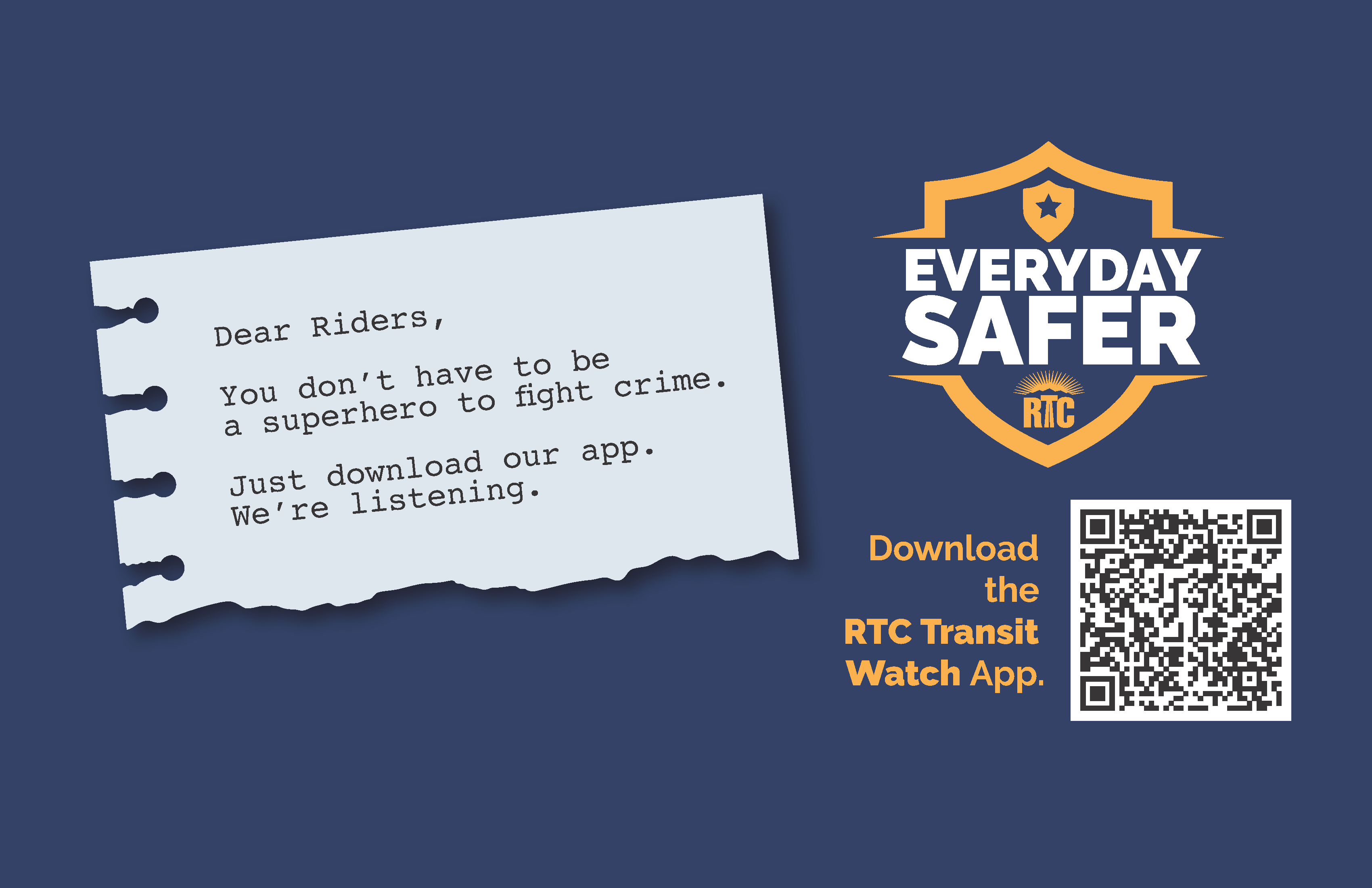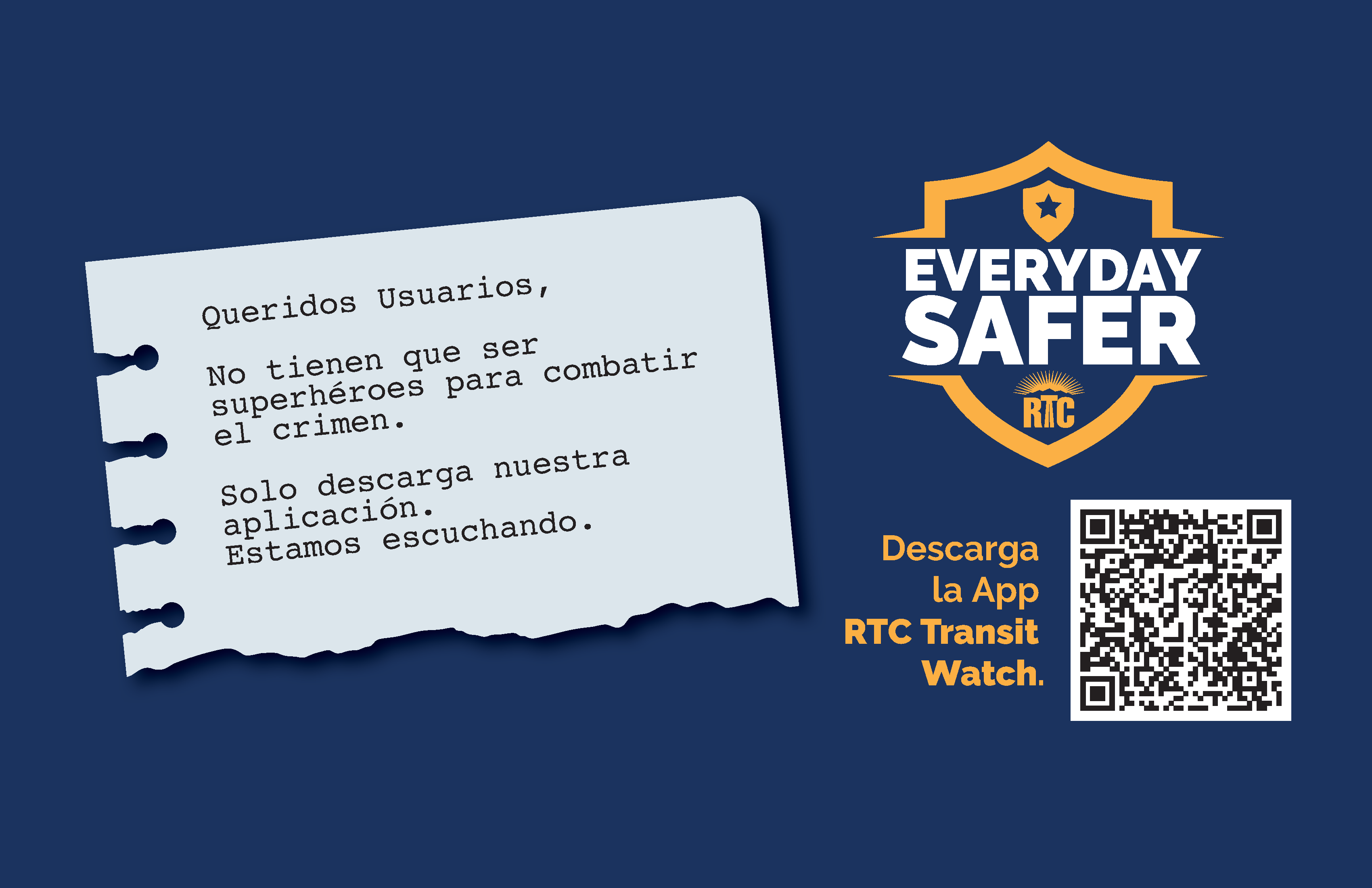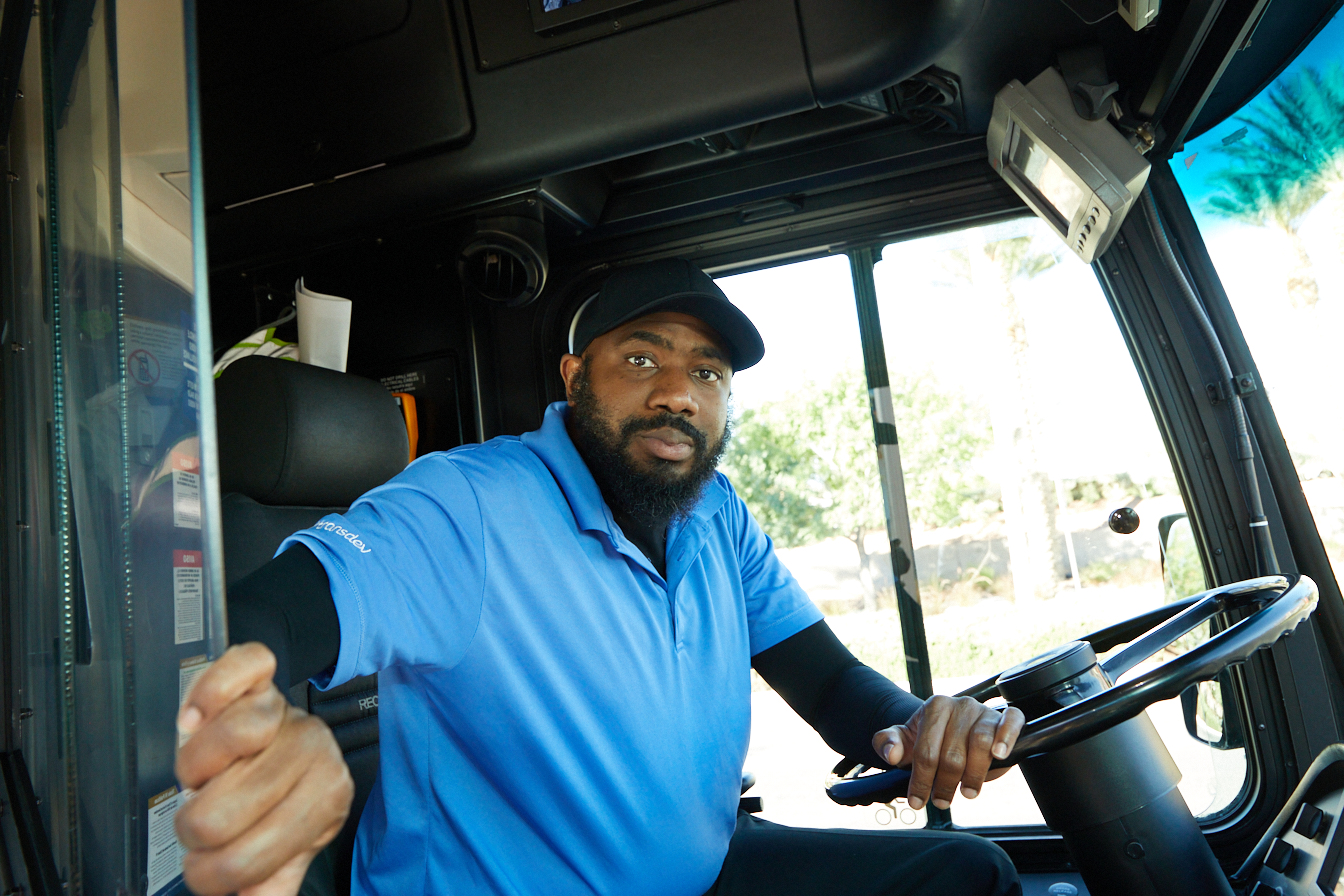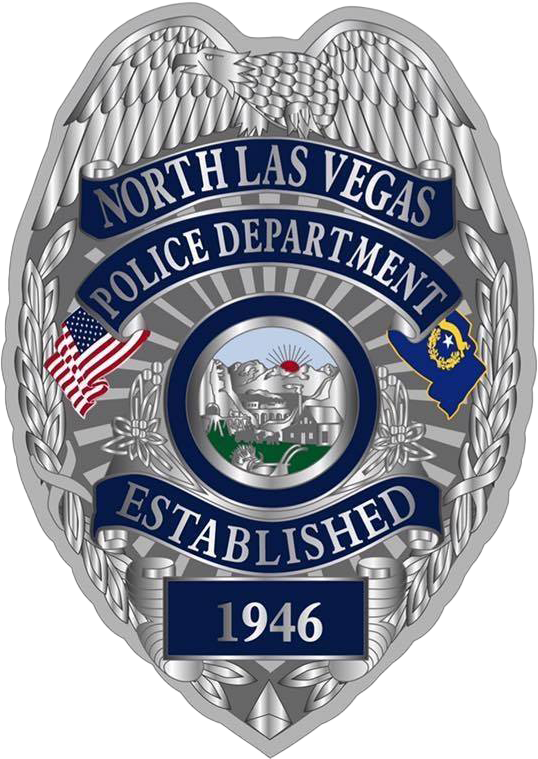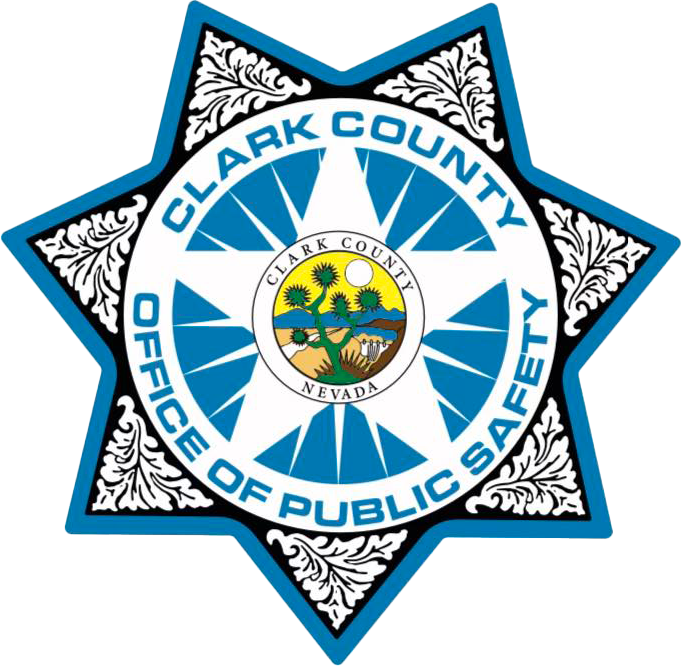Your Safety, Our Mission
RTC Transit connects tens of thousands of residents in our community to jobs, school, medical appointments and more, while transporting millions of visitors up and down the Las Vegas Strip. Last year, alone, we made nearly 50 million passenger trips.
Making these connections safe remains our top priority. As an agency, our goal is to be transparent about our security operations by providing information on the steps that are being taken to better protect RTC customers and operators.
As public safety concerns have increased in recent years, the RTC has engaged with riders, drivers, security officers, and our community to develop a comprehensive, multi-prong approach to making transit safer in Southern Nevada. This ongoing approach to safety includes a focus on continuous security data analysis, investment in security personnel and technology, strategic bus stop placement and lighting, education campaigns and partnerships.
What We're Doing to Improve Safety Every Day
Step on board with confidence! Our buses are equipped with state-of-the-art safety features and adhere to the highest industry standards. From well-maintained vehicles and well-lit bus stops to vigilant and trained drivers and security staff, we leave no stone unturned in ensuring your safety.
Community Approach
Beyond the buses and bus stops, our commitment to safety extends into the heart of the communities we serve. Through educational initiatives, community outreach, and collaborative marketing efforts, we aim to foster a culture of safety that permeates every neighborhood we touch. Your safety is not just a priority for us – it's a shared responsibility we take to heart.
We have launched to let our community and transit riders know about the safety measures we have in place, our ongoing prioritization and expansion of safety programs, and how best to report incidents.
We invite our community to be part of the solution by reporting anything and everything they deem suspicious, and we want potential criminals and perpetrators to know that they will be seen and brought to justice. We’ve made the process easy by incorporating the Transit Watch feature into the rideRTC app.
As part of this new campaign, we will continue to reinforce the elements included in our transit Code of Conduct.
Investment in Our Future
Since 2015, we have spent more than $33 million on security services and safety upgrades throughout our transit system. We understand our work is far from complete, so we are continually working on new ways to improve safety for our customers.
Our Partners in Safety
Our transit system is part of our larger Southern Nevada community and as such, it faces the same issues that our entire community faces including homelessness and mental health. We continue to partner with our local agencies and law enforcement to supplement our security officers’ response when necessary and to provide support for victims of crimes.
As a result, the RTC has been able to develop new relationships with social service providers to better serve some of the system’s most vulnerable customers.
Safety by the Numbers
Last year (fiscal year 2023), we carried nearly 50 million passengers, a 21 percent increase in ridership year over year. At this same time, we had 201 total incidents which is a decrease of 12 percent; however, the severity of these incidents has worsened.
While the number of incidents may have decreased, we believe that one incident is one too many and we remain committed to evaluating our programs, processes and investments and working with our transit community to make every day safer.
Passenger-on-passenger assaults by fiscal year:
The RTC defines “assault” as the unlawful use of physical force or spitting upon the person of another.
- FY 2019: 126 assaults (1 to every 511,159 passengers)
- FY 2020: 179 assaults (1 to every 315,033 passengers)
- FY 2021: 153 assaults (1 to every 228,791 passengers)
- FY 2022: 195 assaults (1 to every 210,016 passengers)
- FY 2023: 166 assaults (1 to every 298,741 passengers)
Passenger-on-Operator assaults by fiscal year:
The RTC defines “assault” as the unlawful use of physical force or spitting upon the person of another.
- FY 2019: 36 assaults (1 to every 1,789,056 passengers)
- FY 2020: 42 assaults (1 to every 1,342,641 passengers)
- FY 2021: 38 assaults (1 to every 921,185 passengers)
- FY 2022: 32 assaults (1 to every 1,279,786 passengers)
- FY 2023: 35 assaults (1 to every 1,416,885 passengers)








